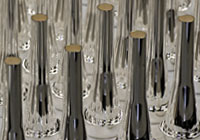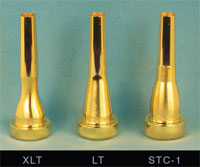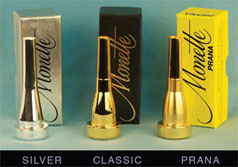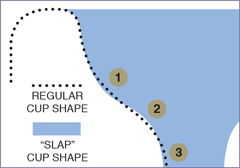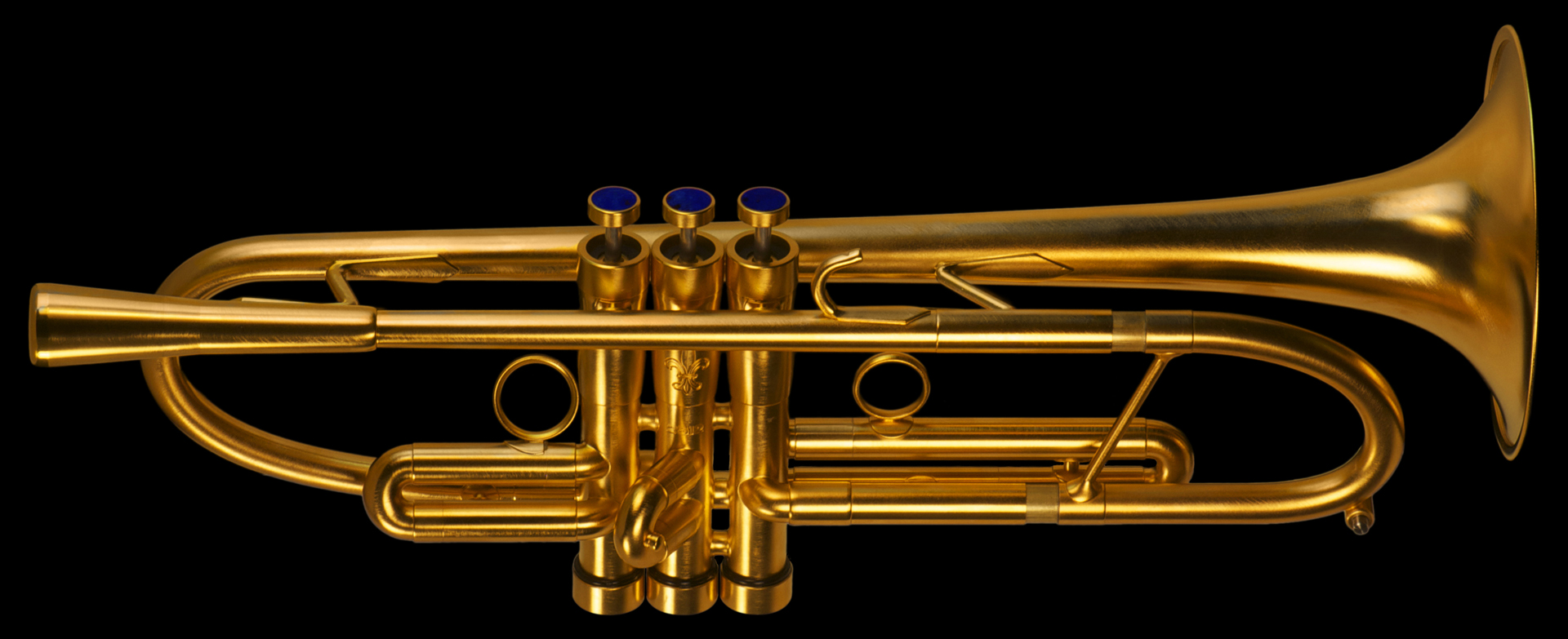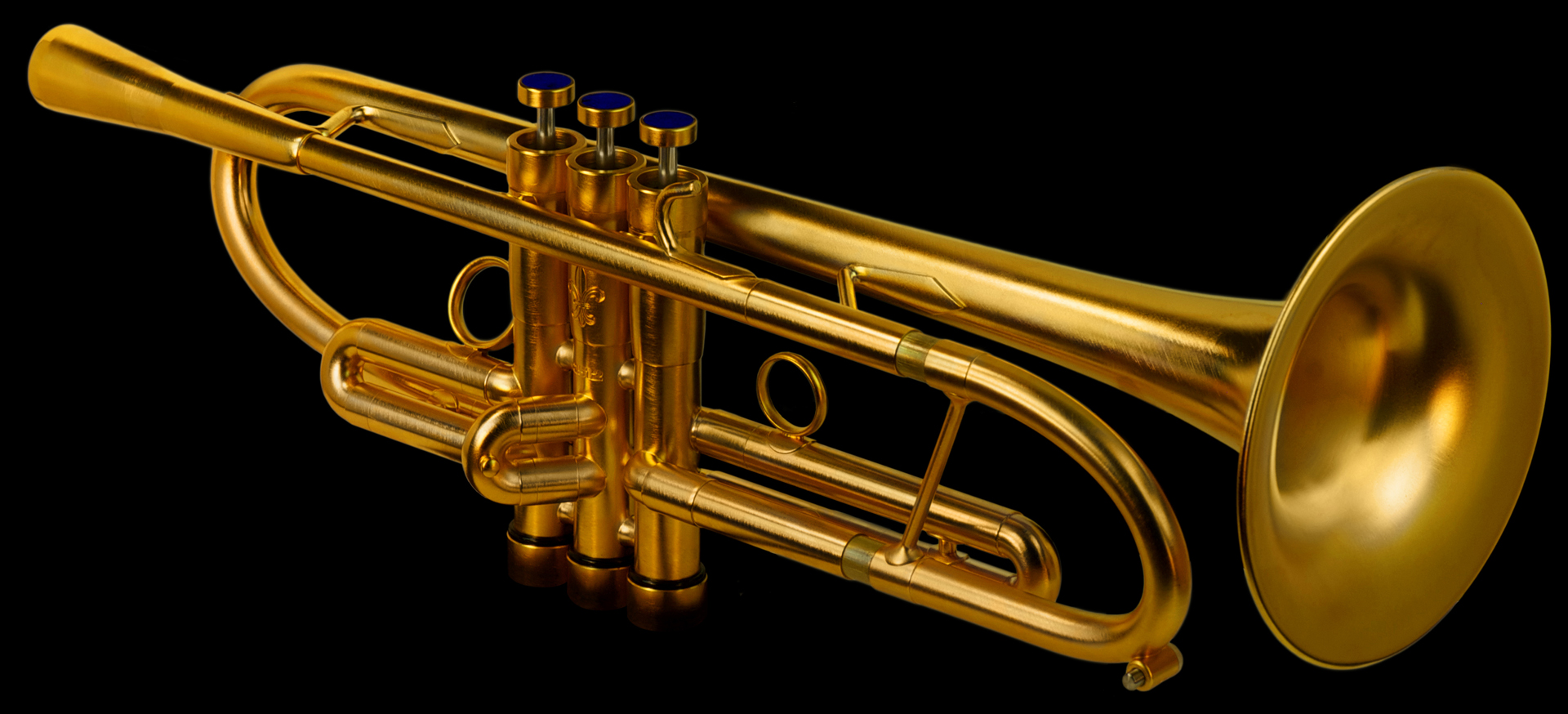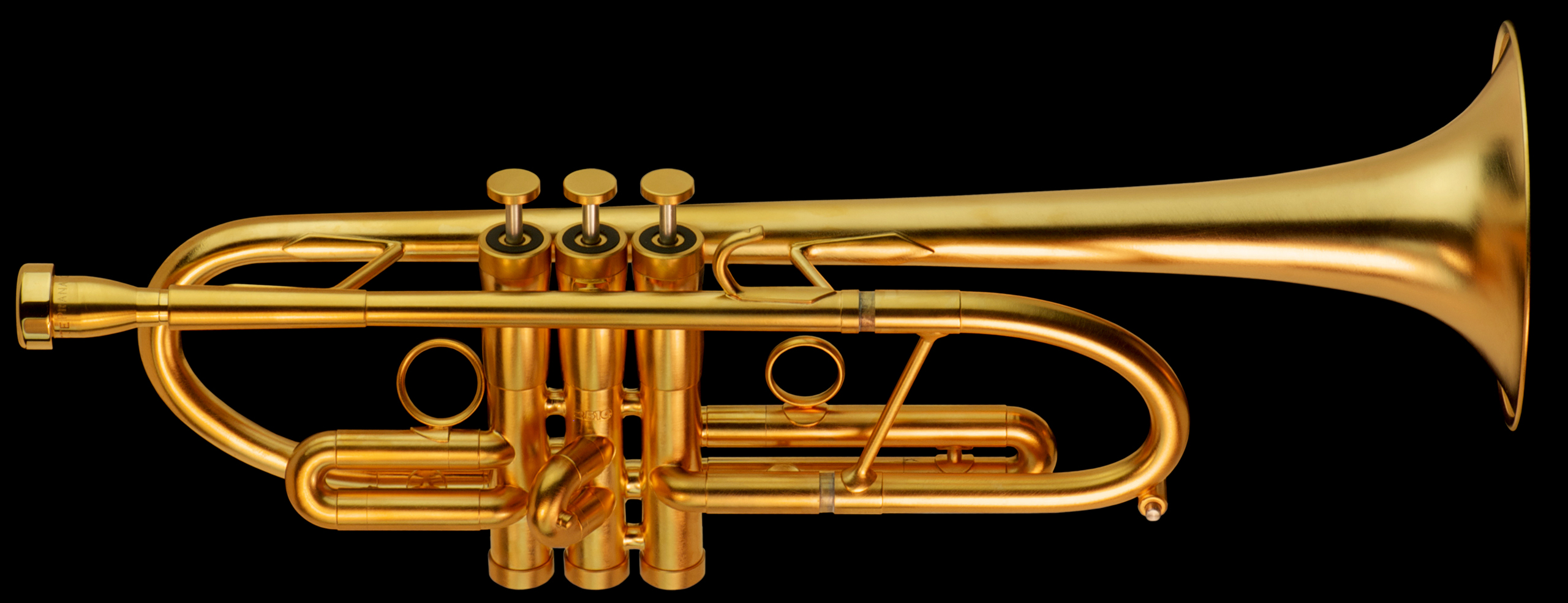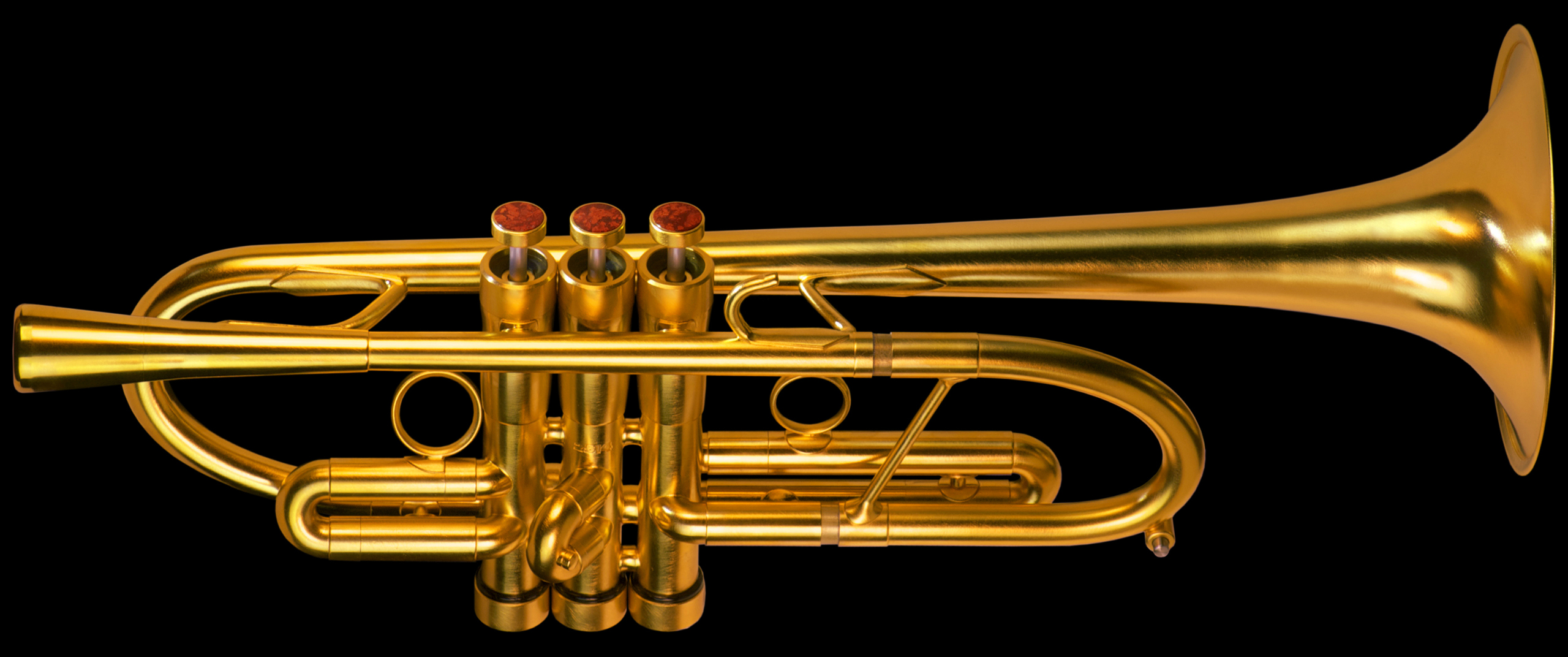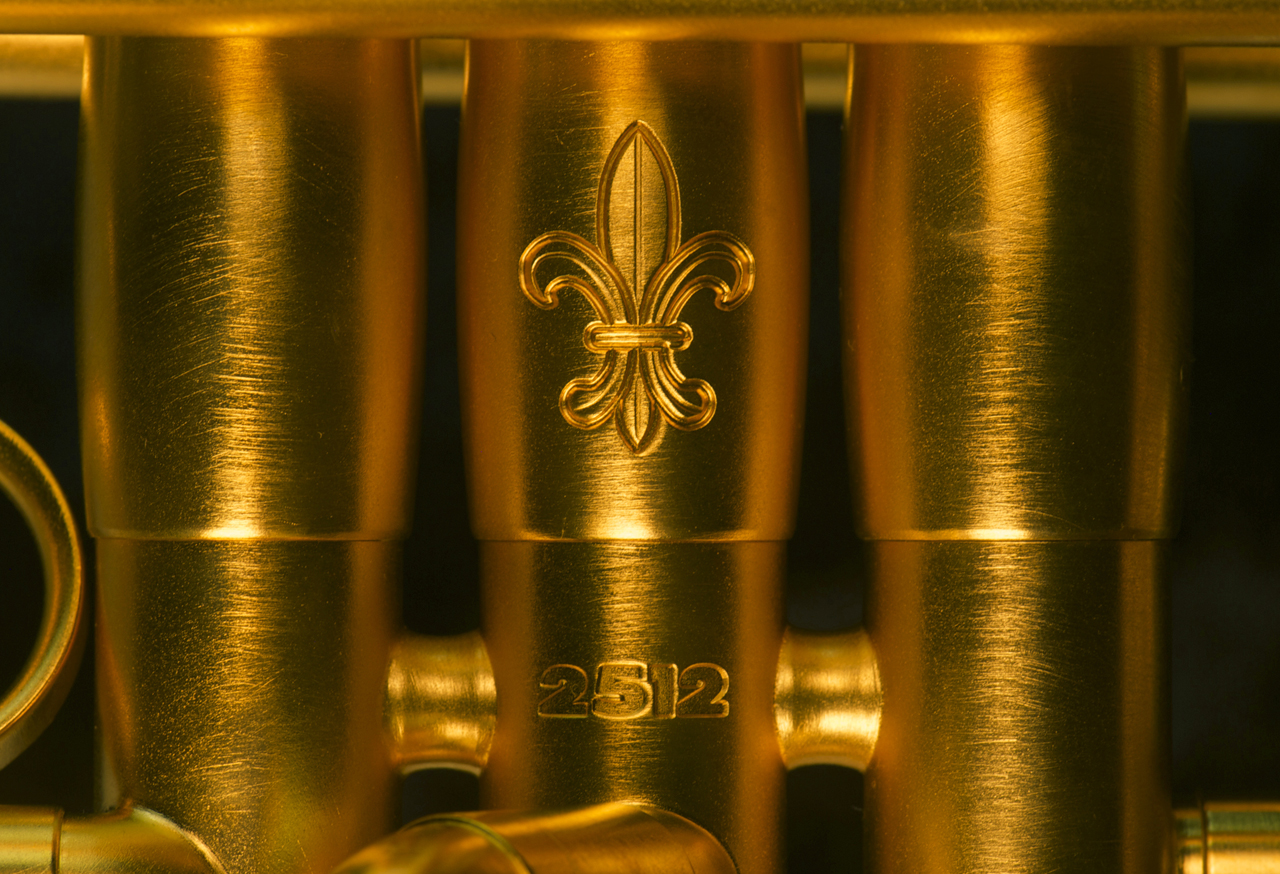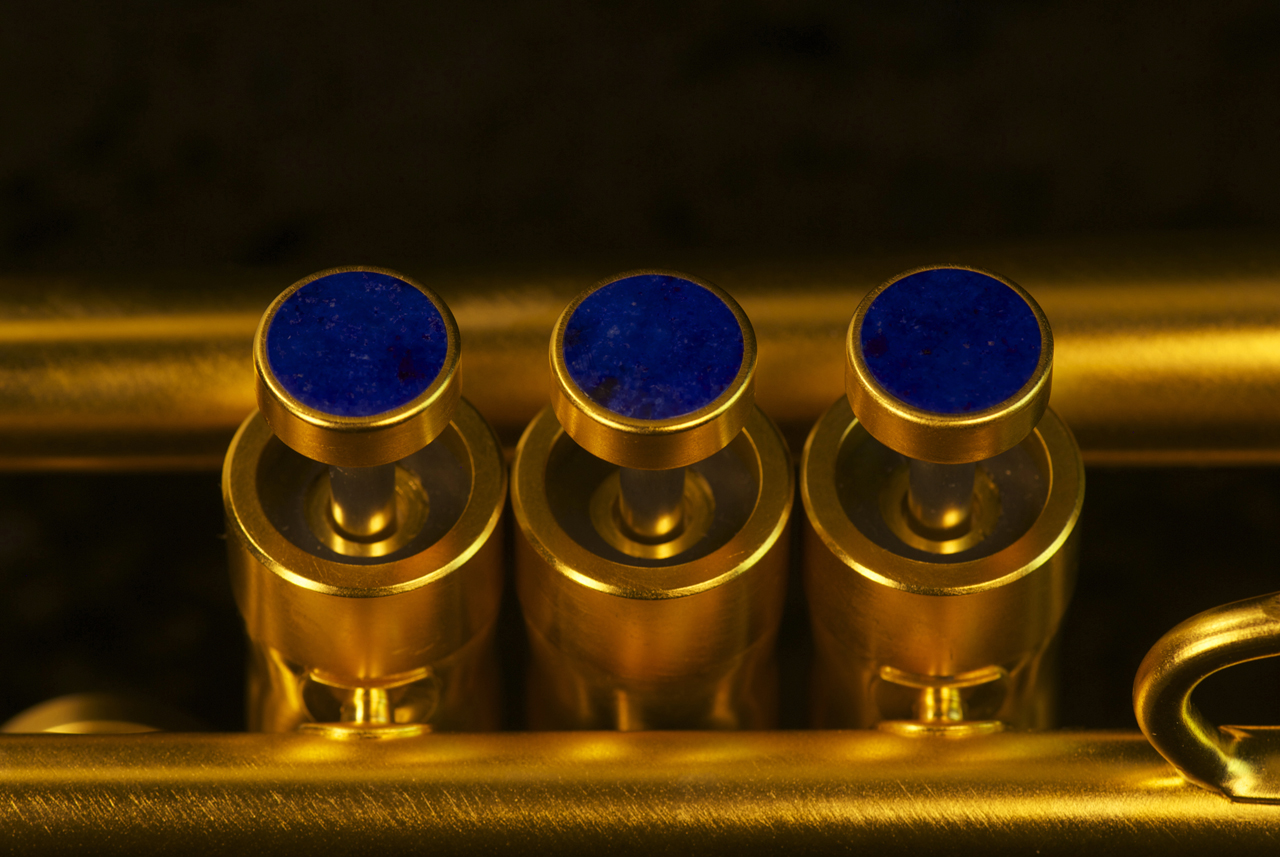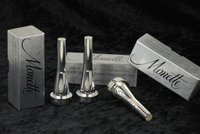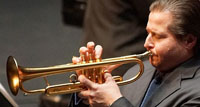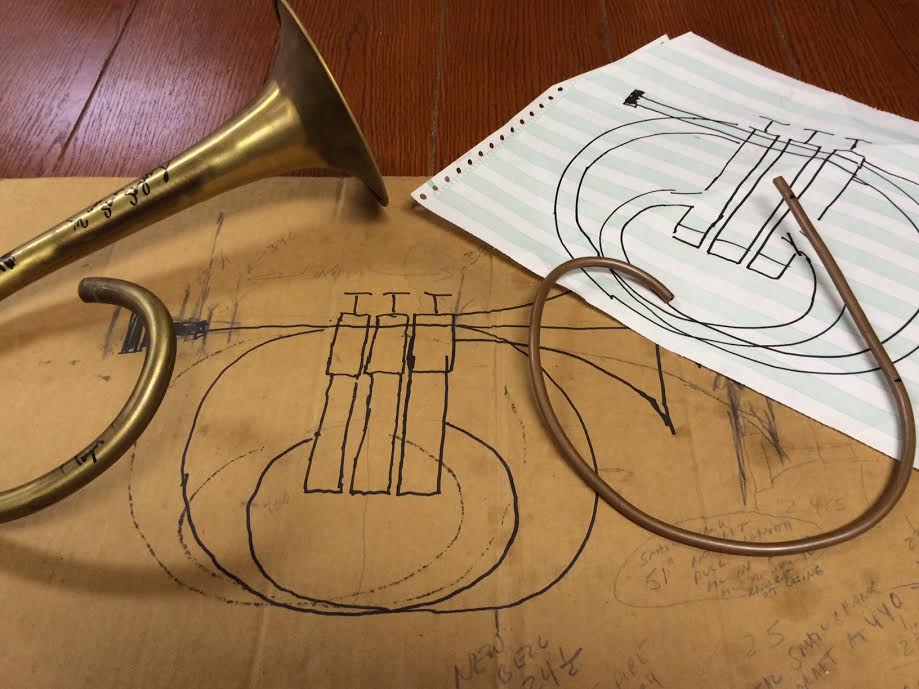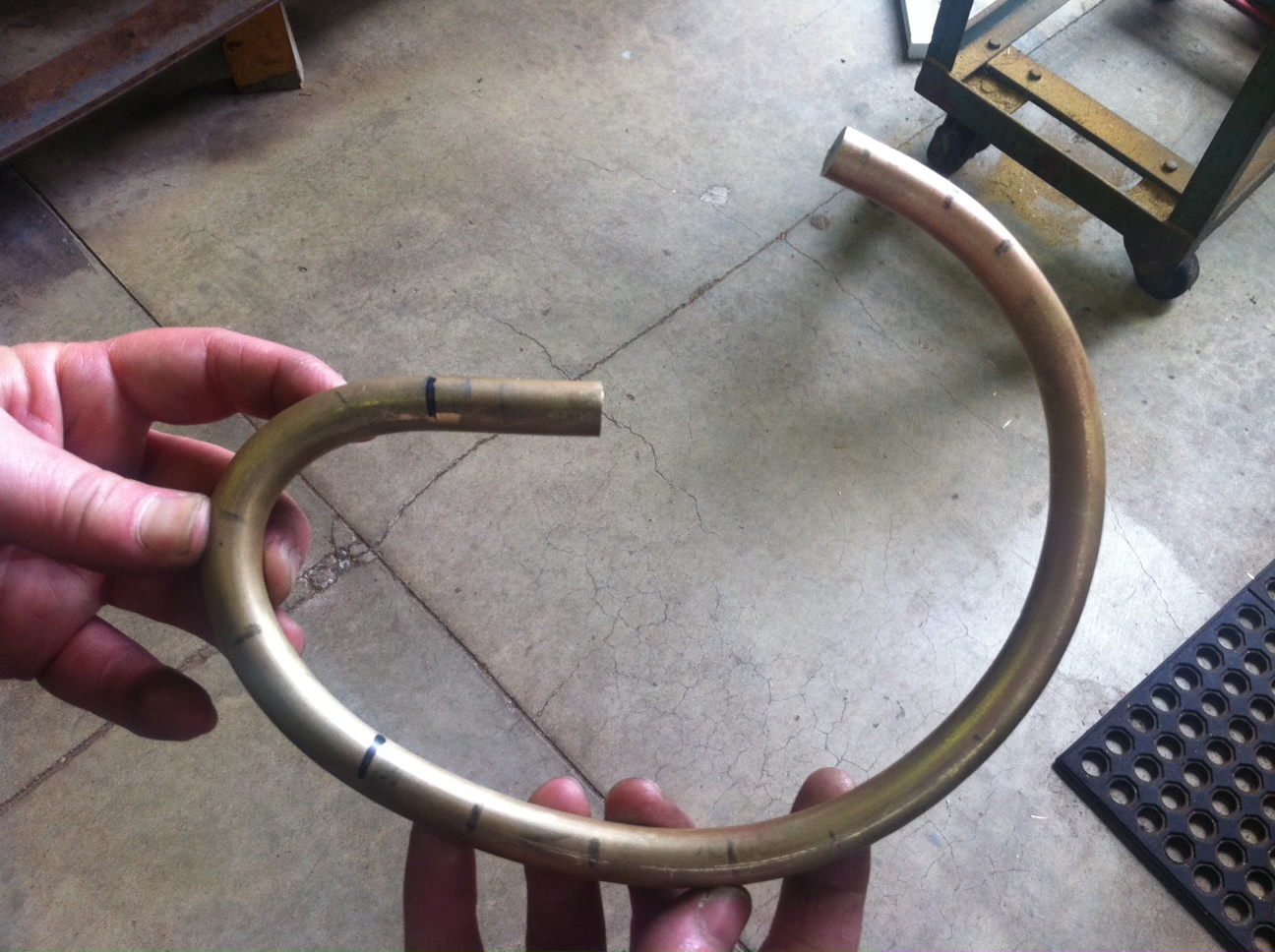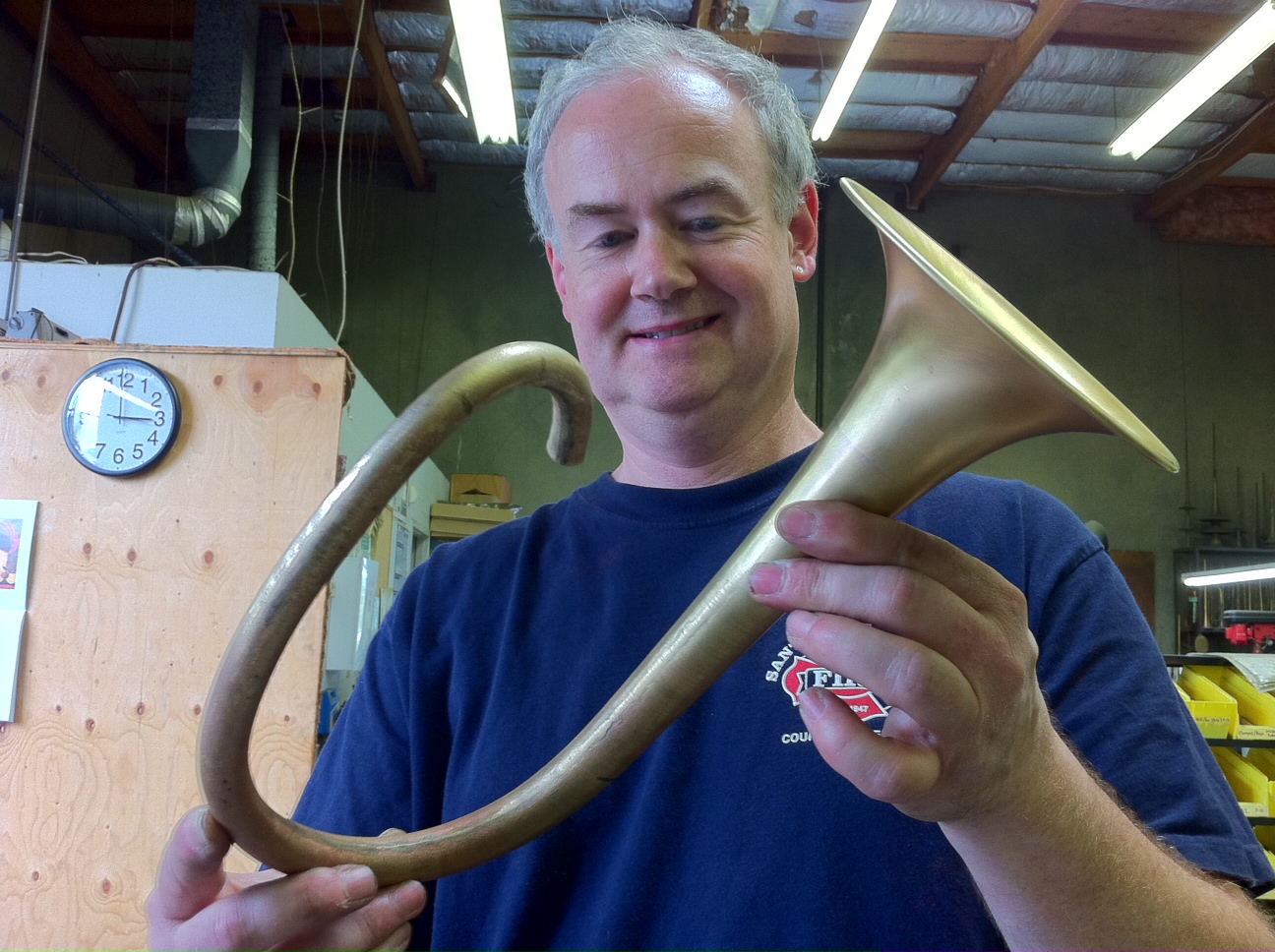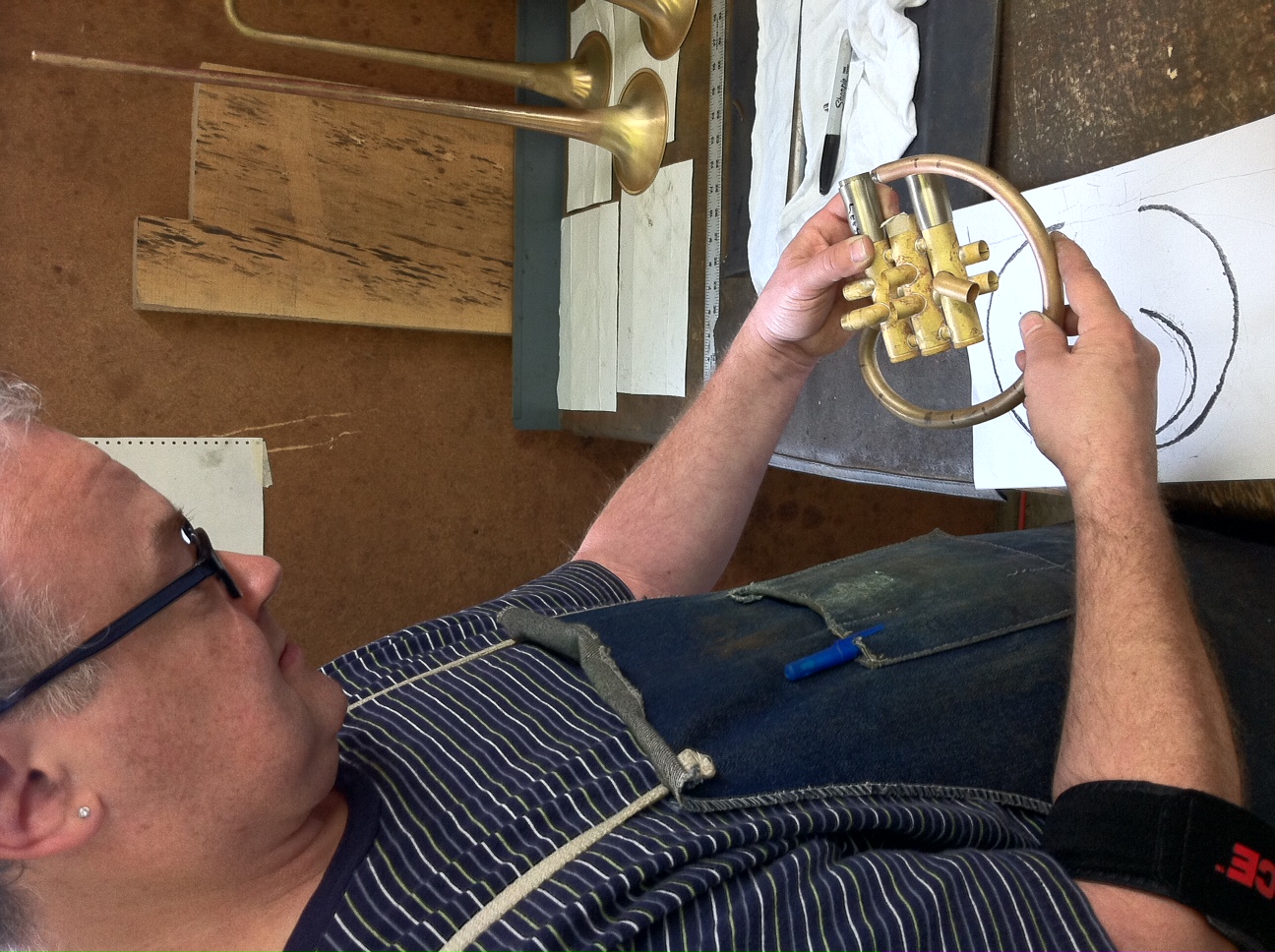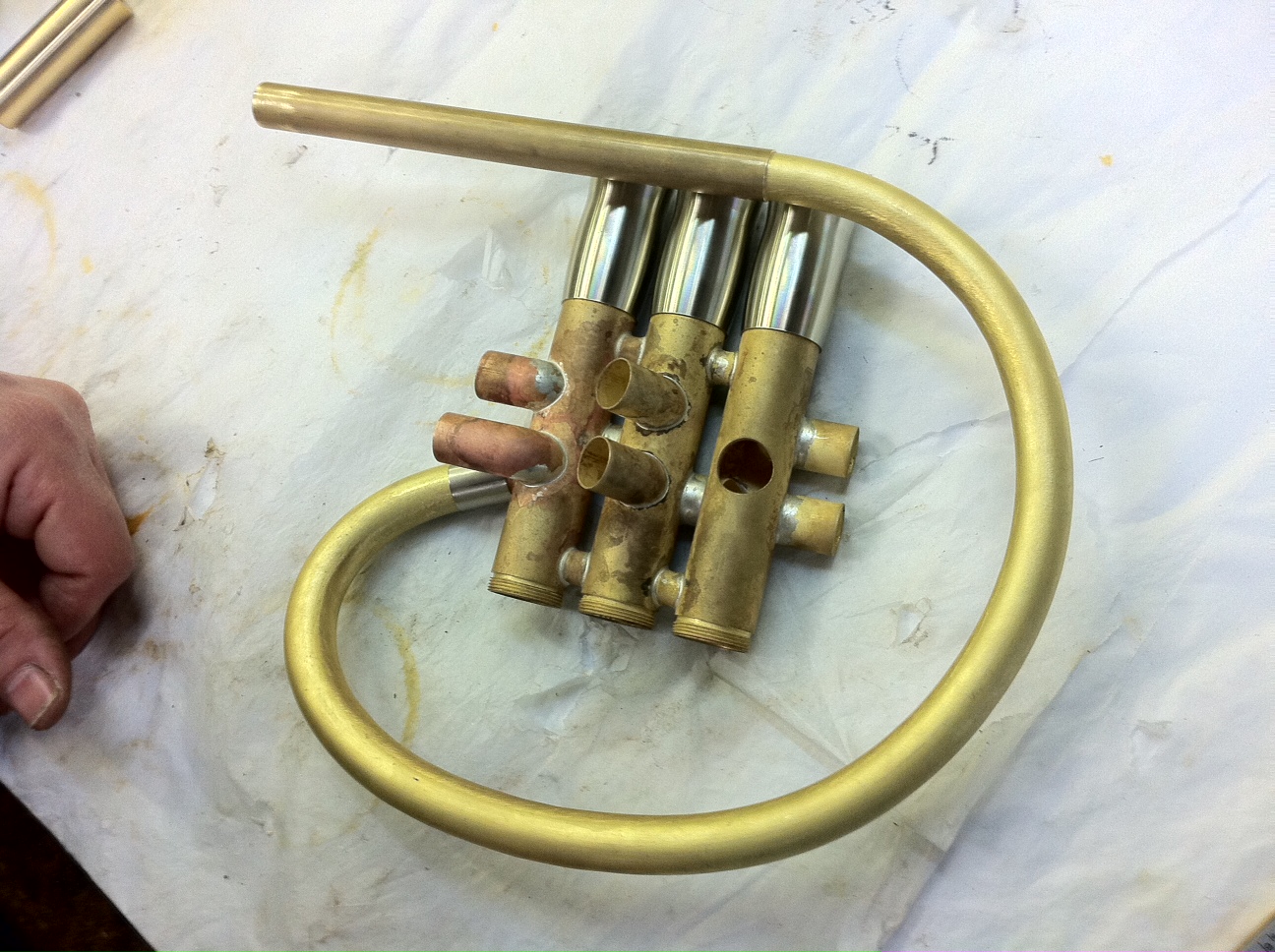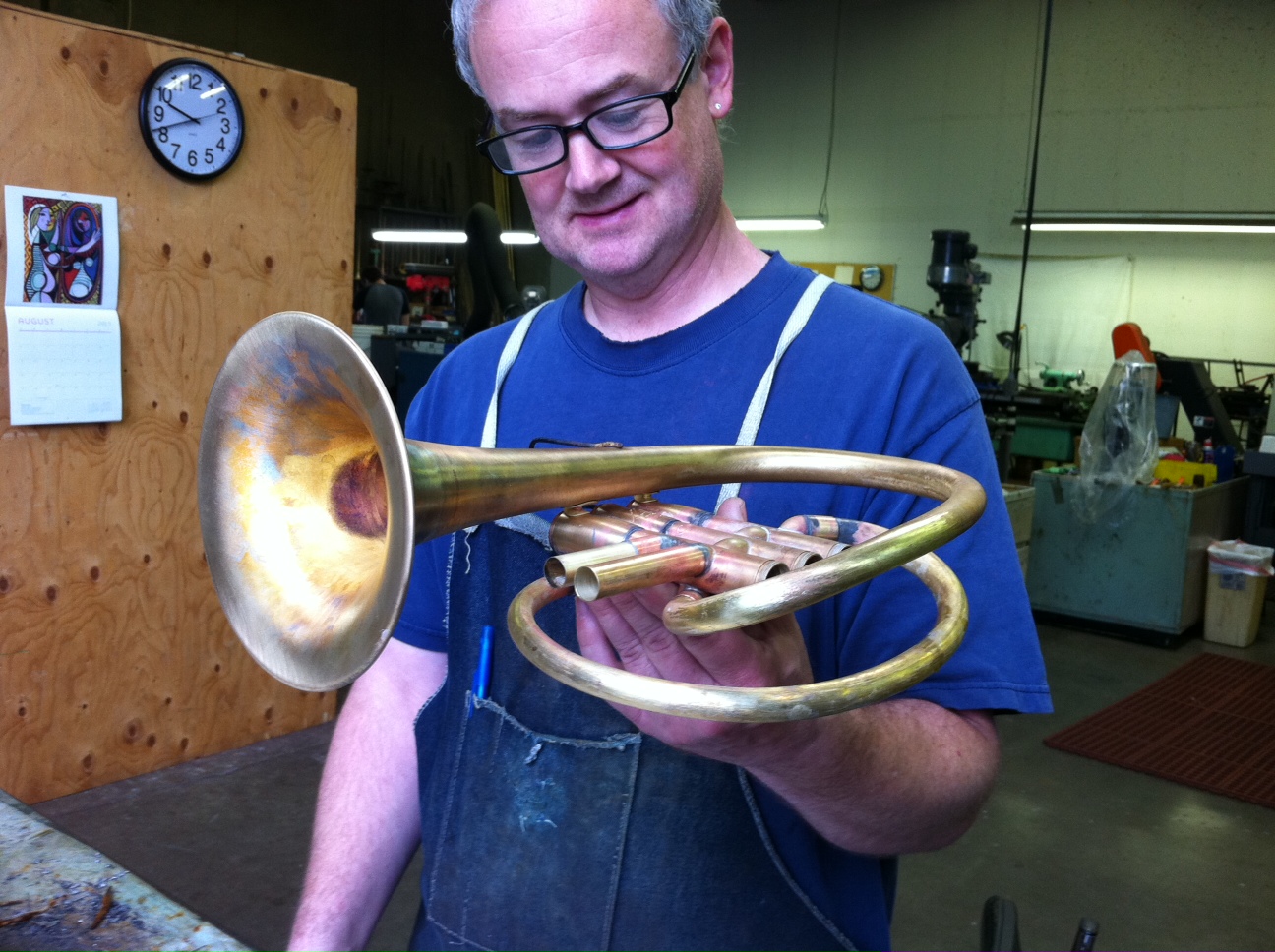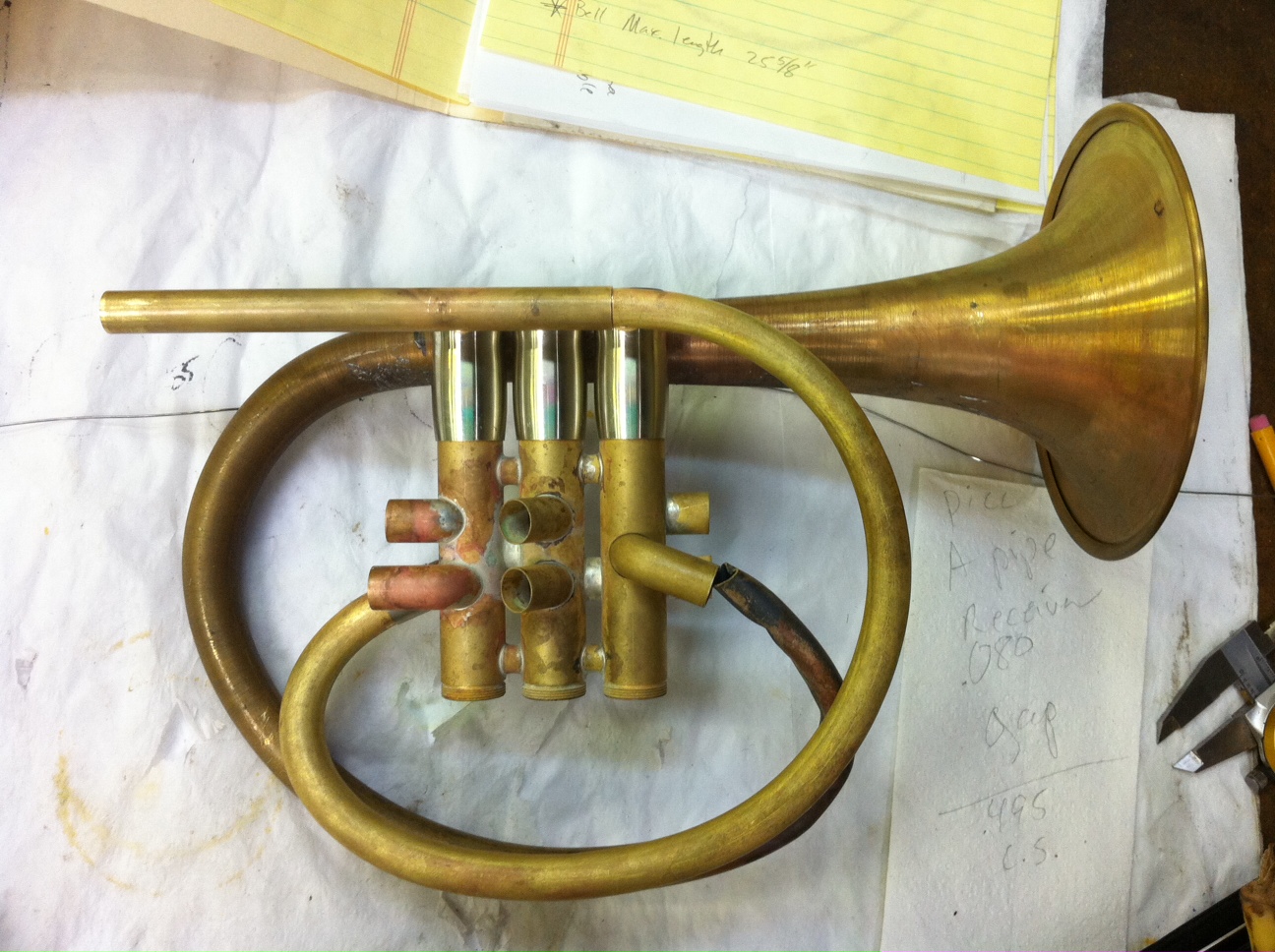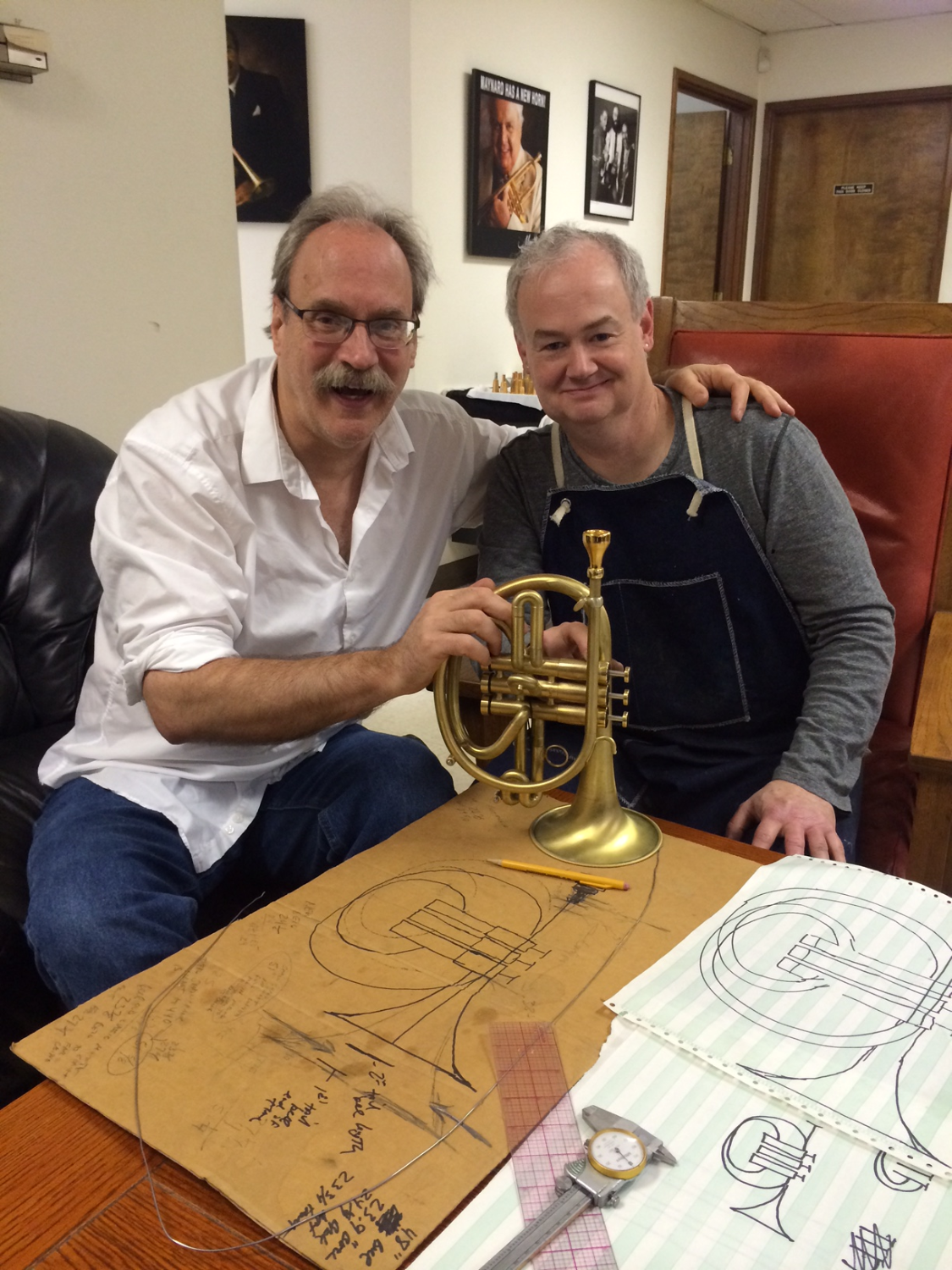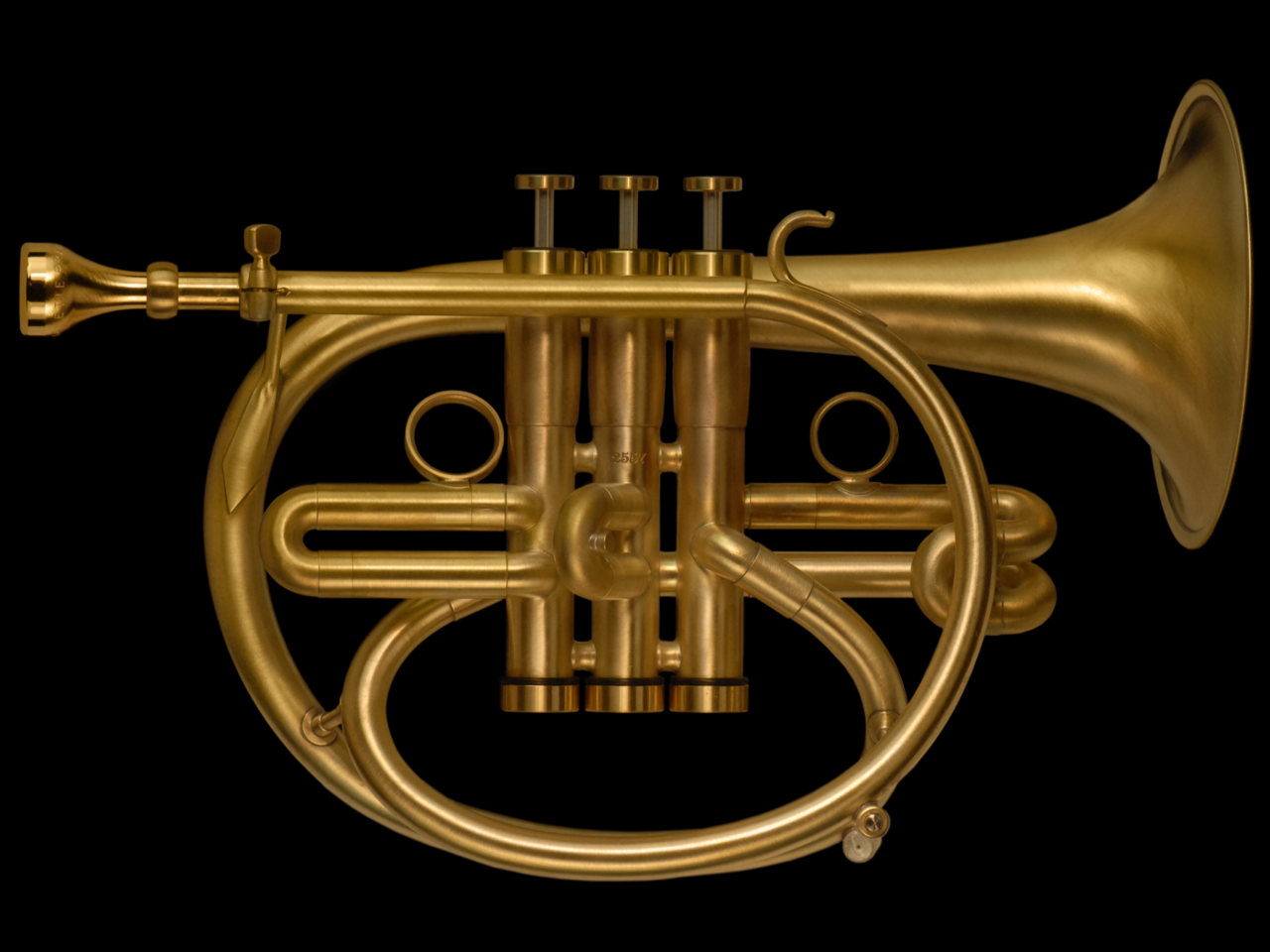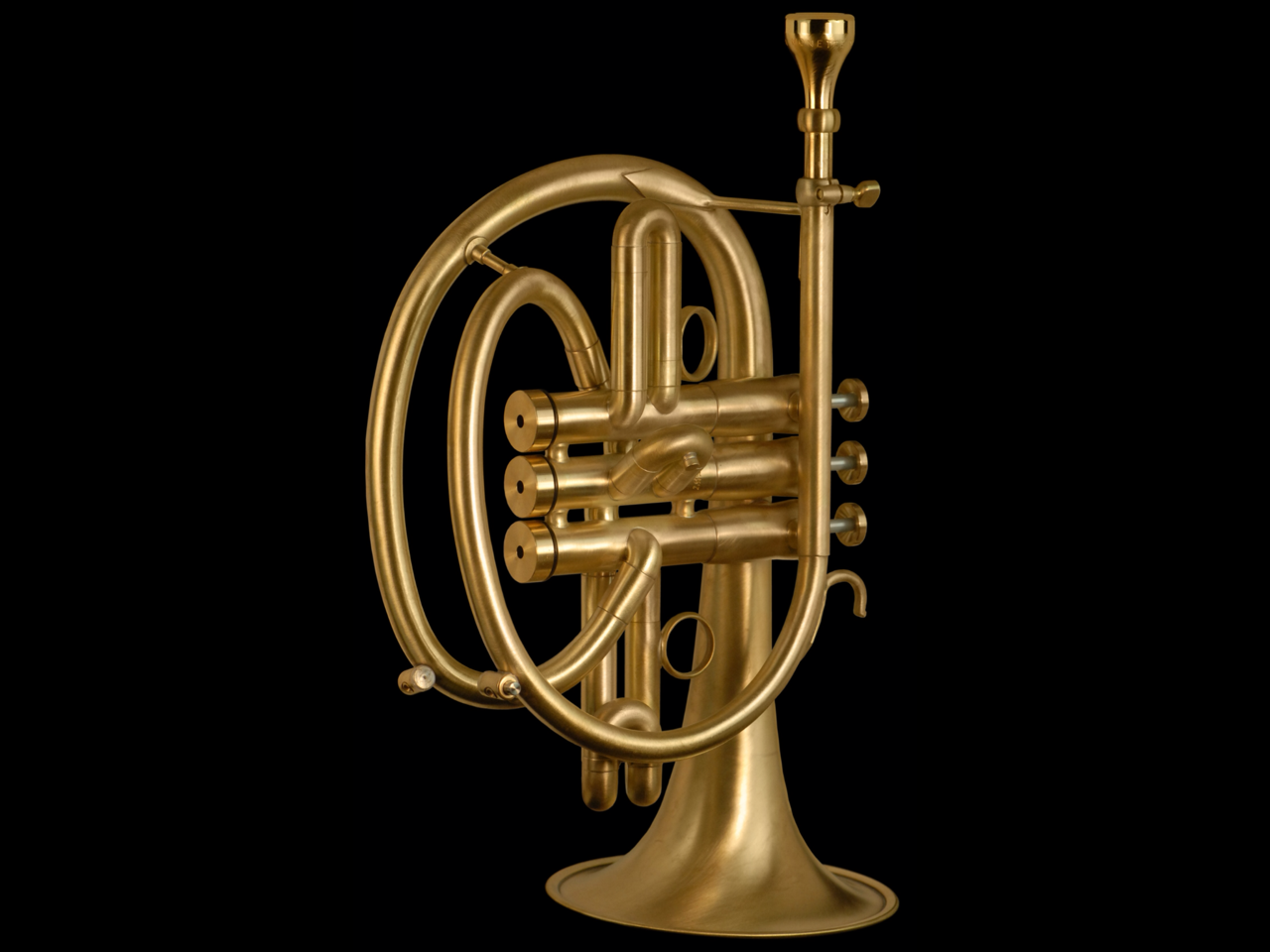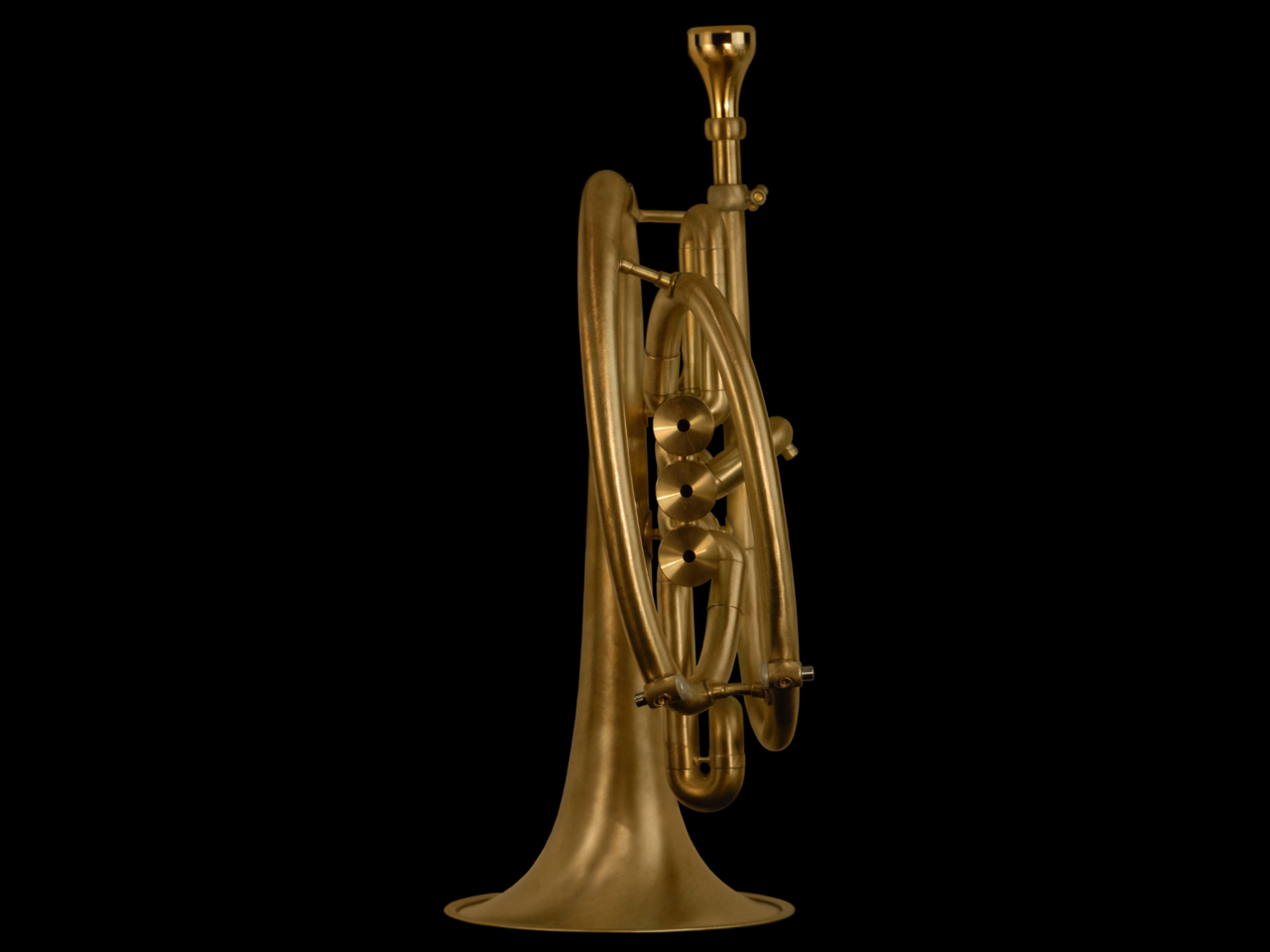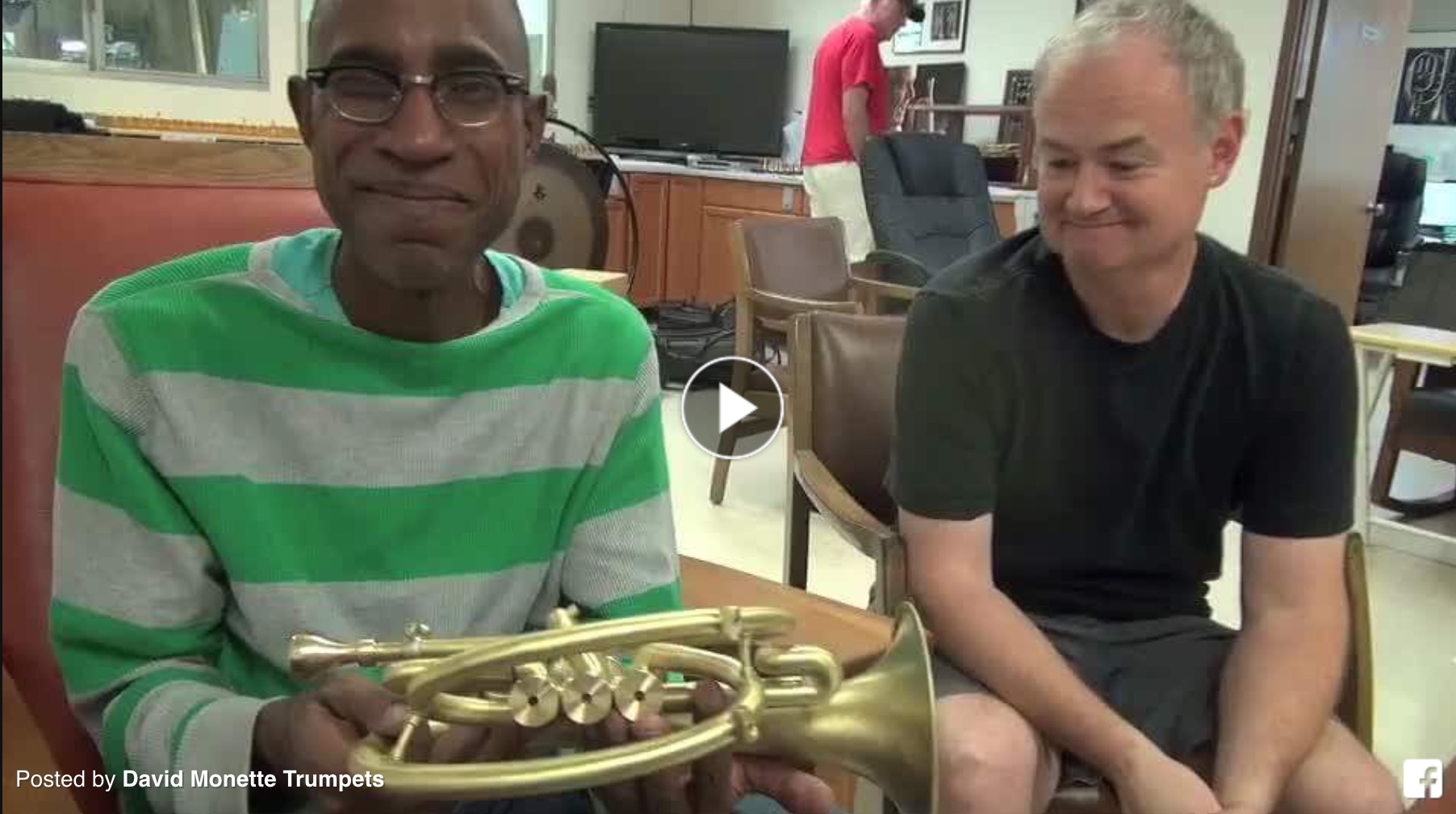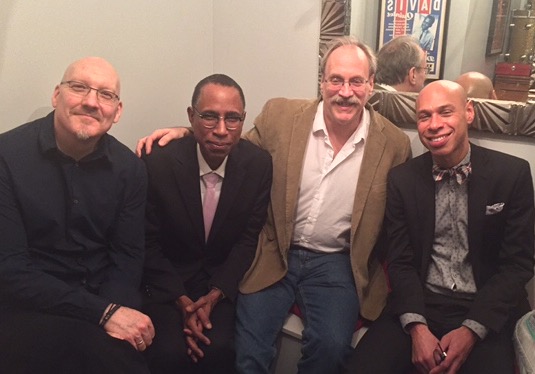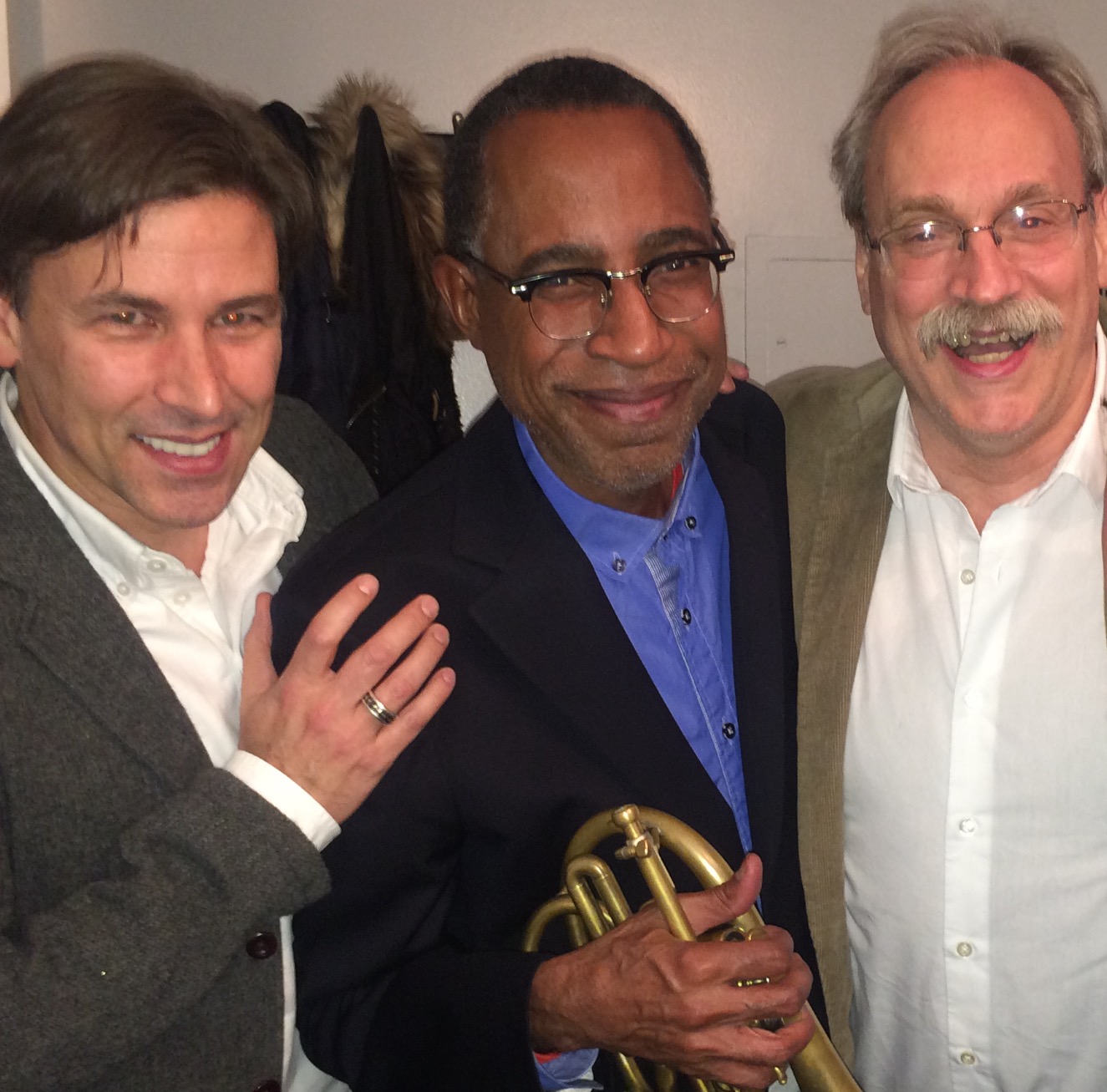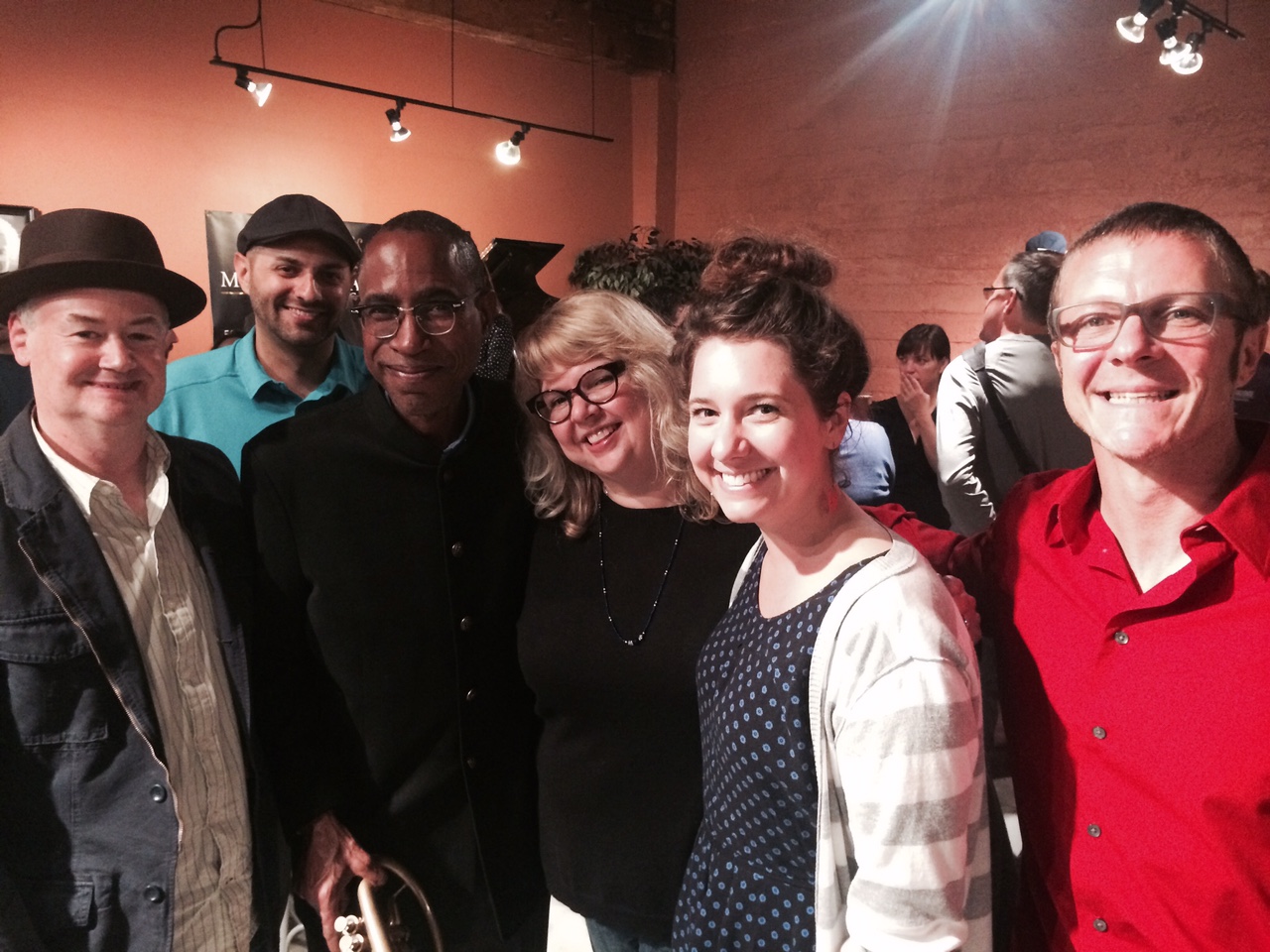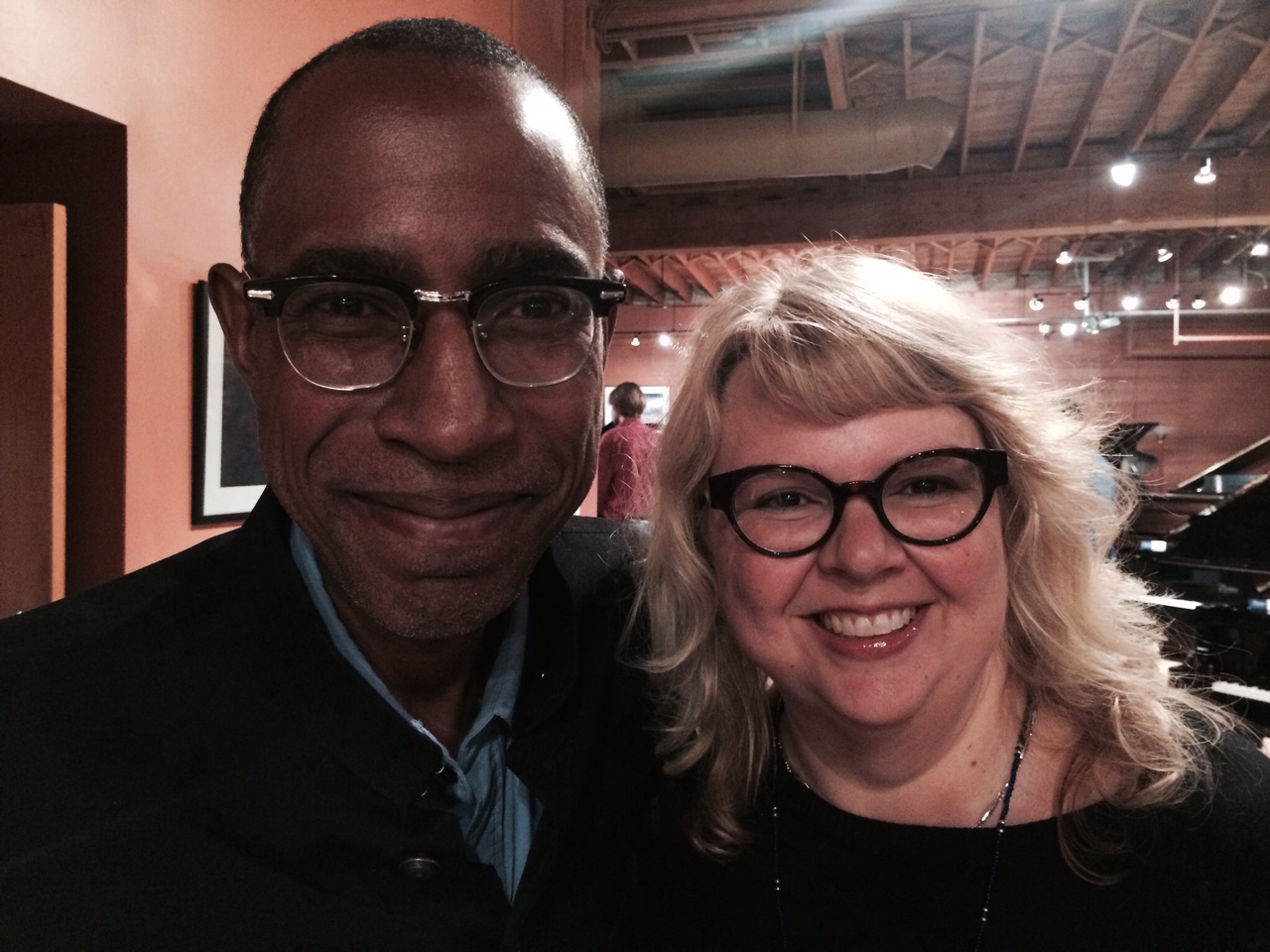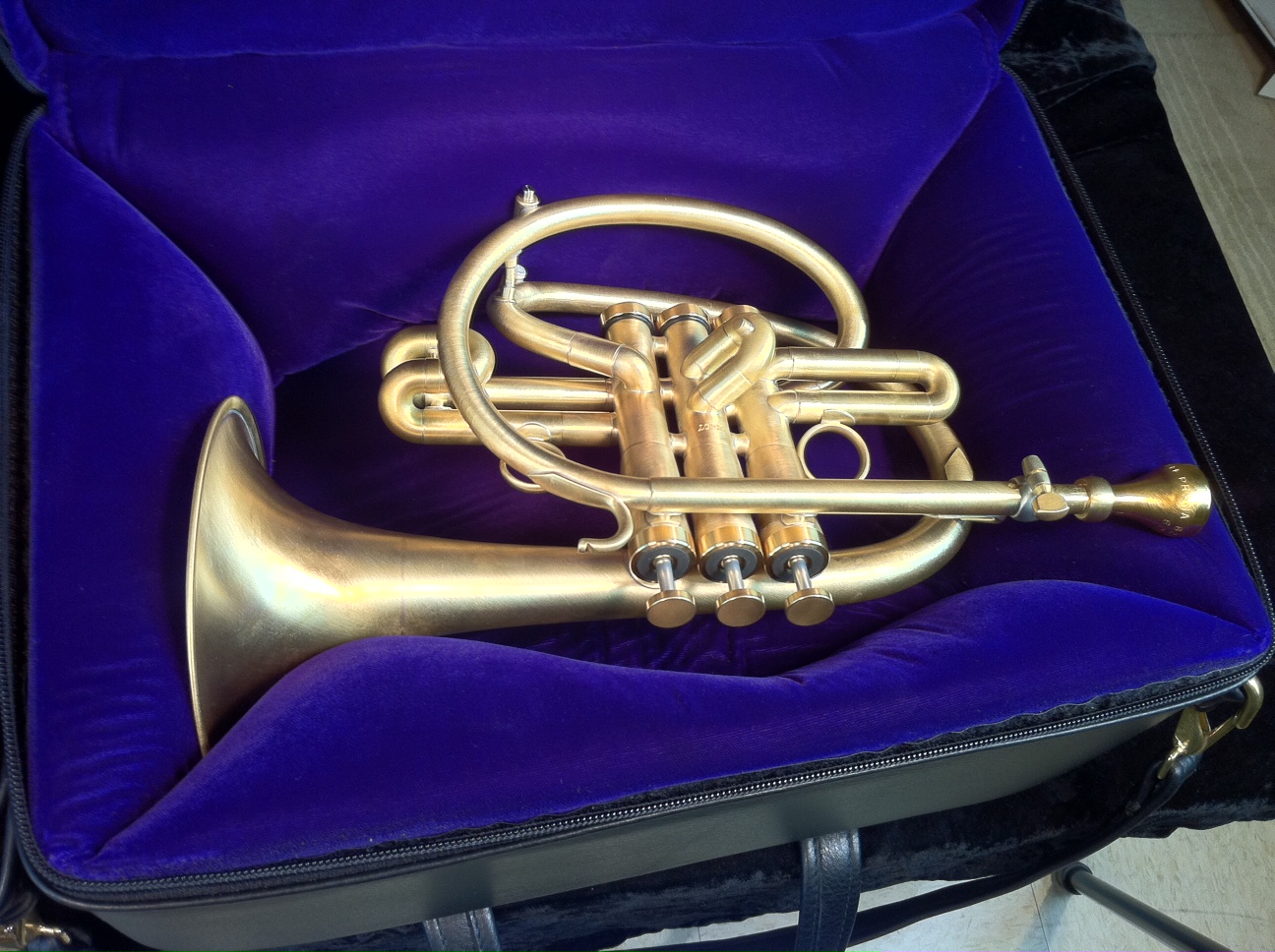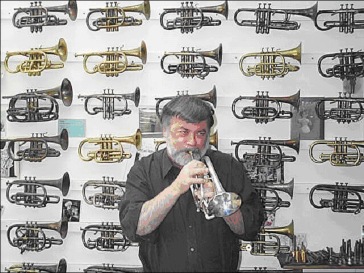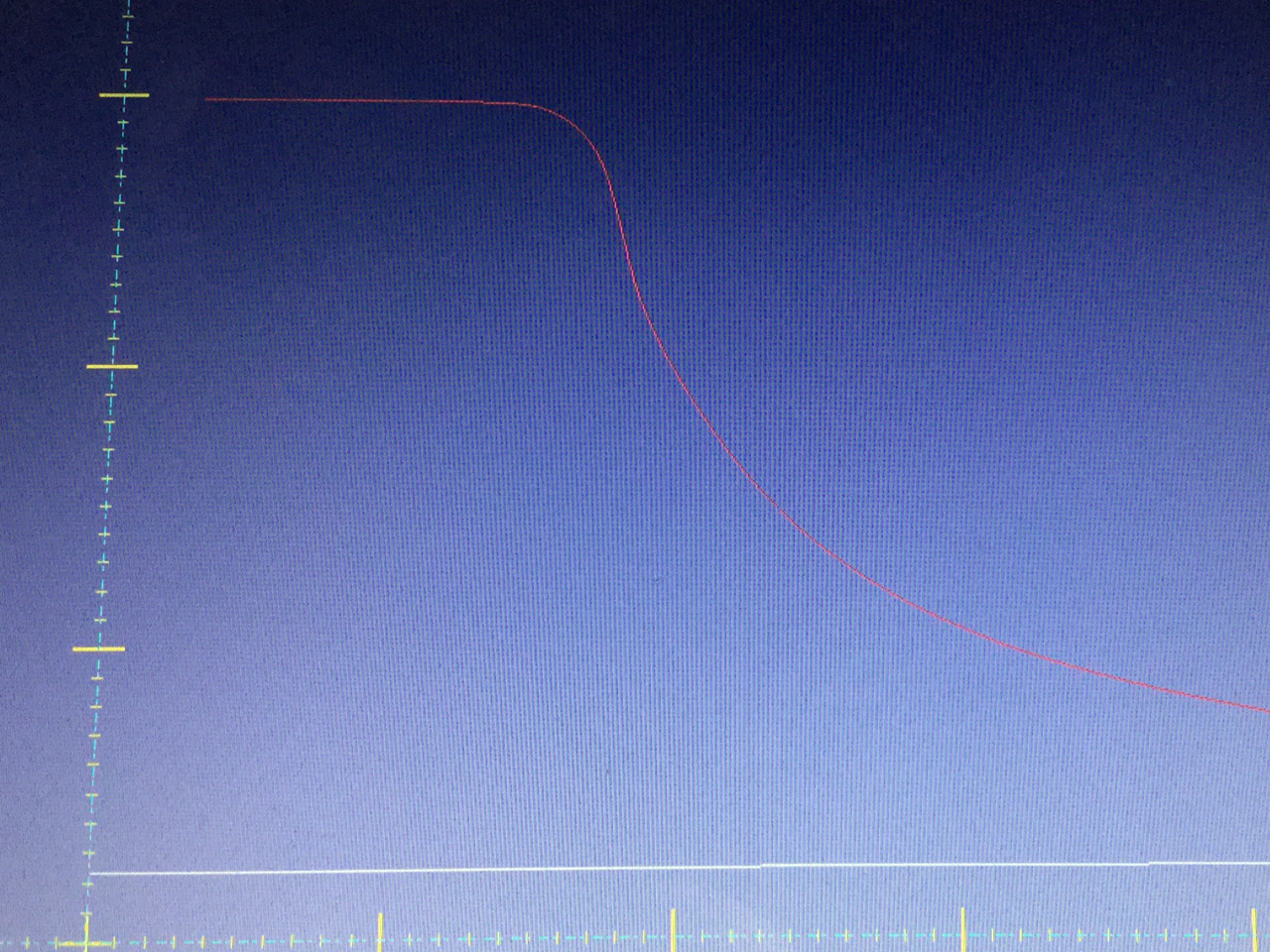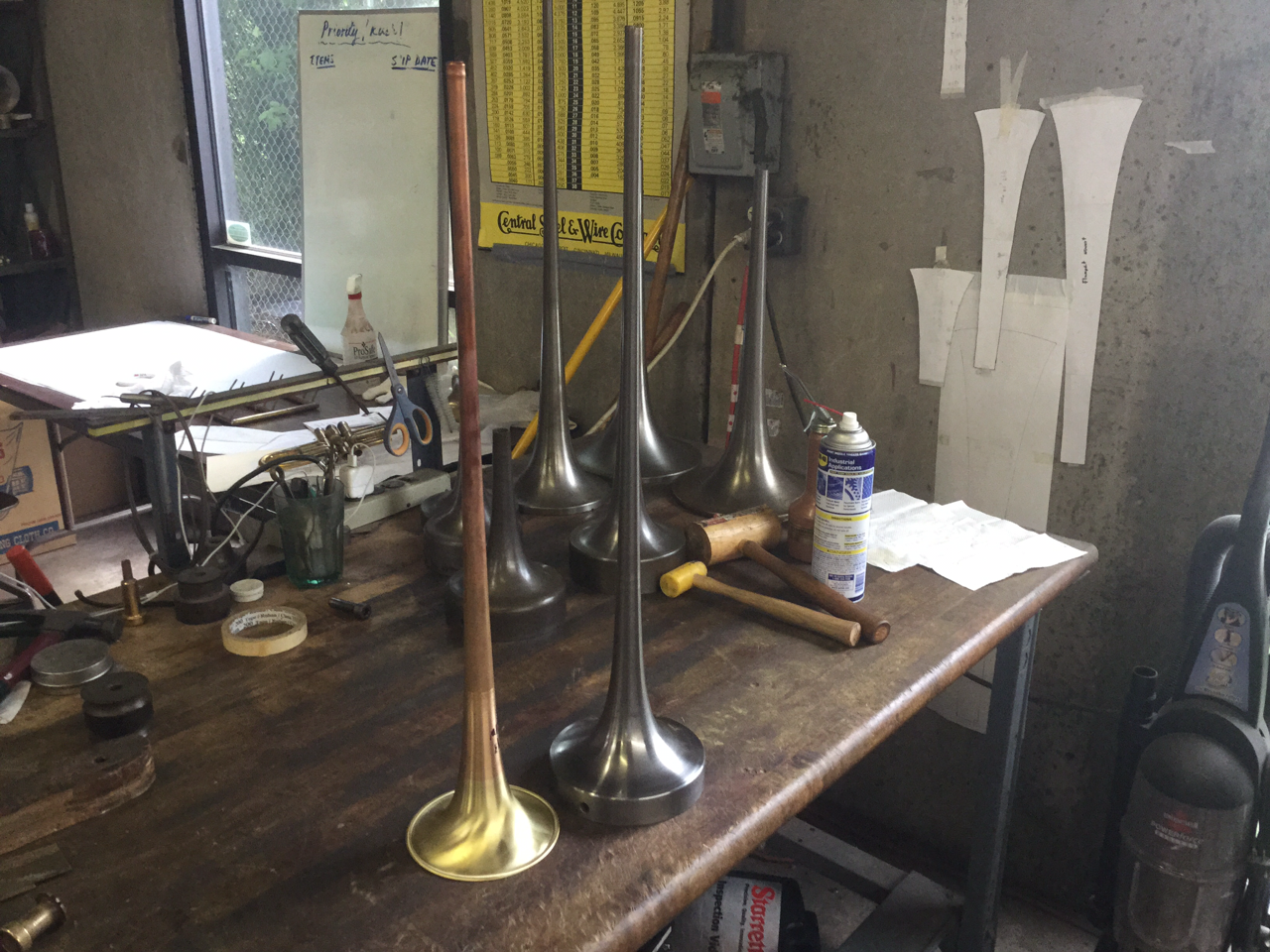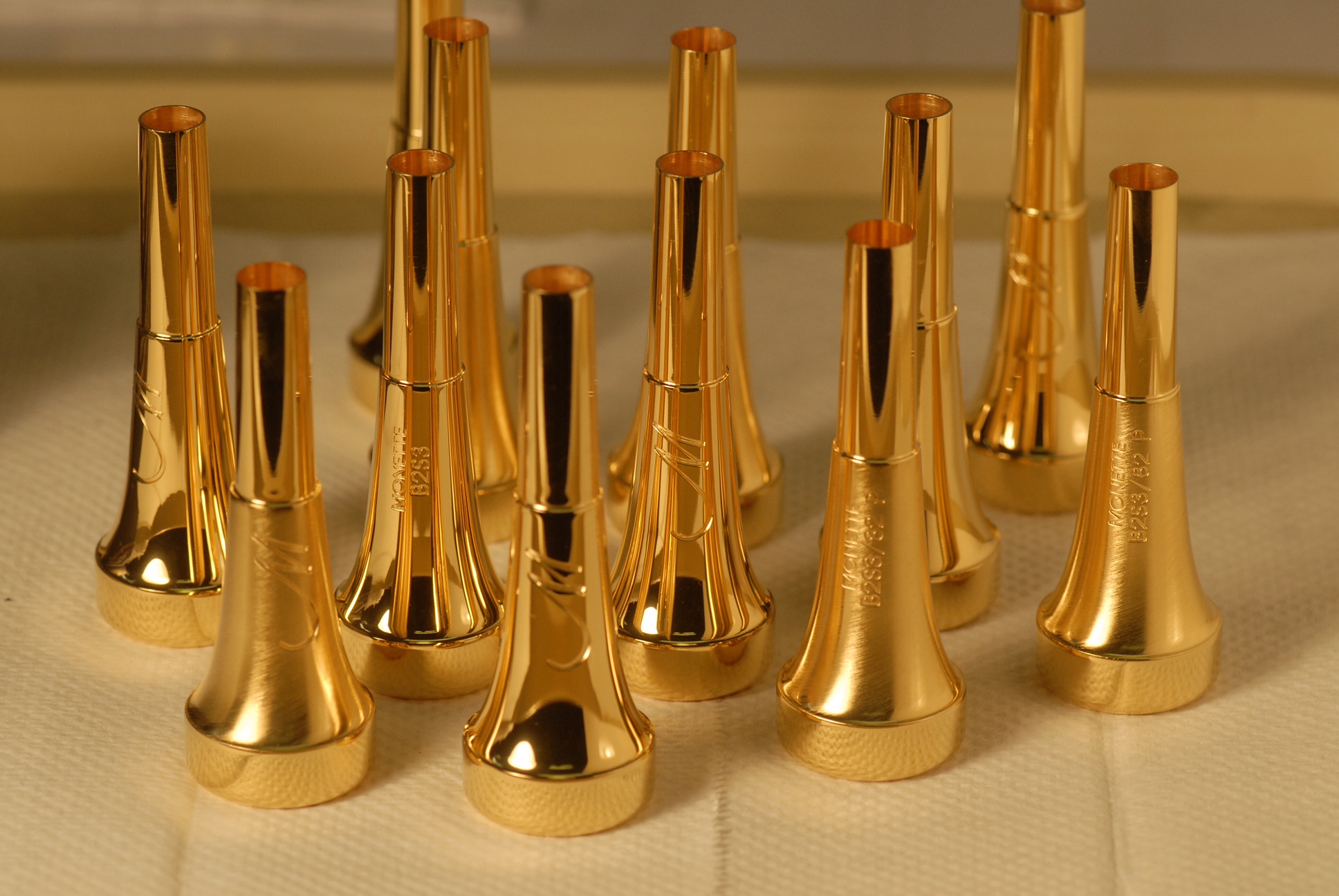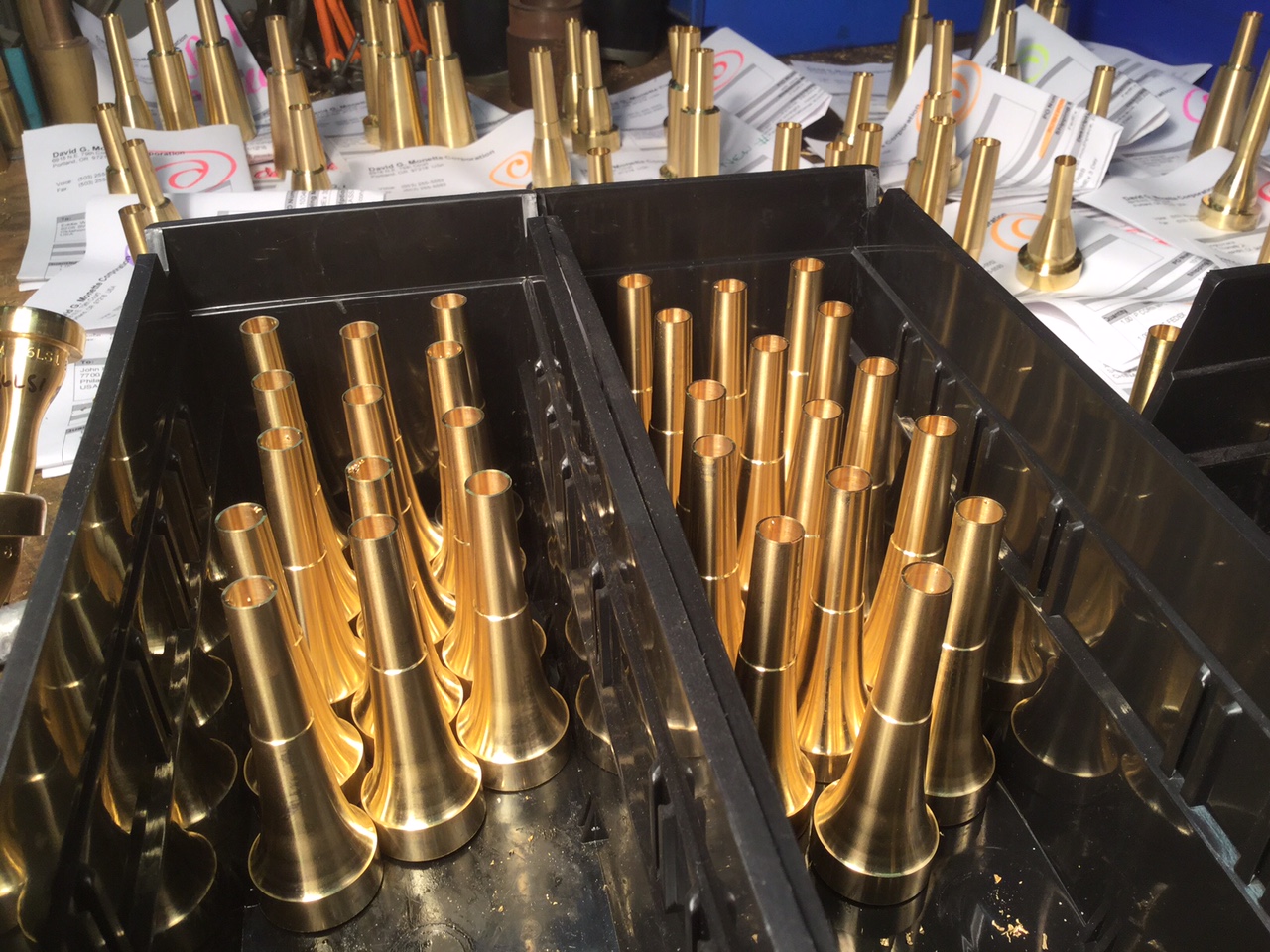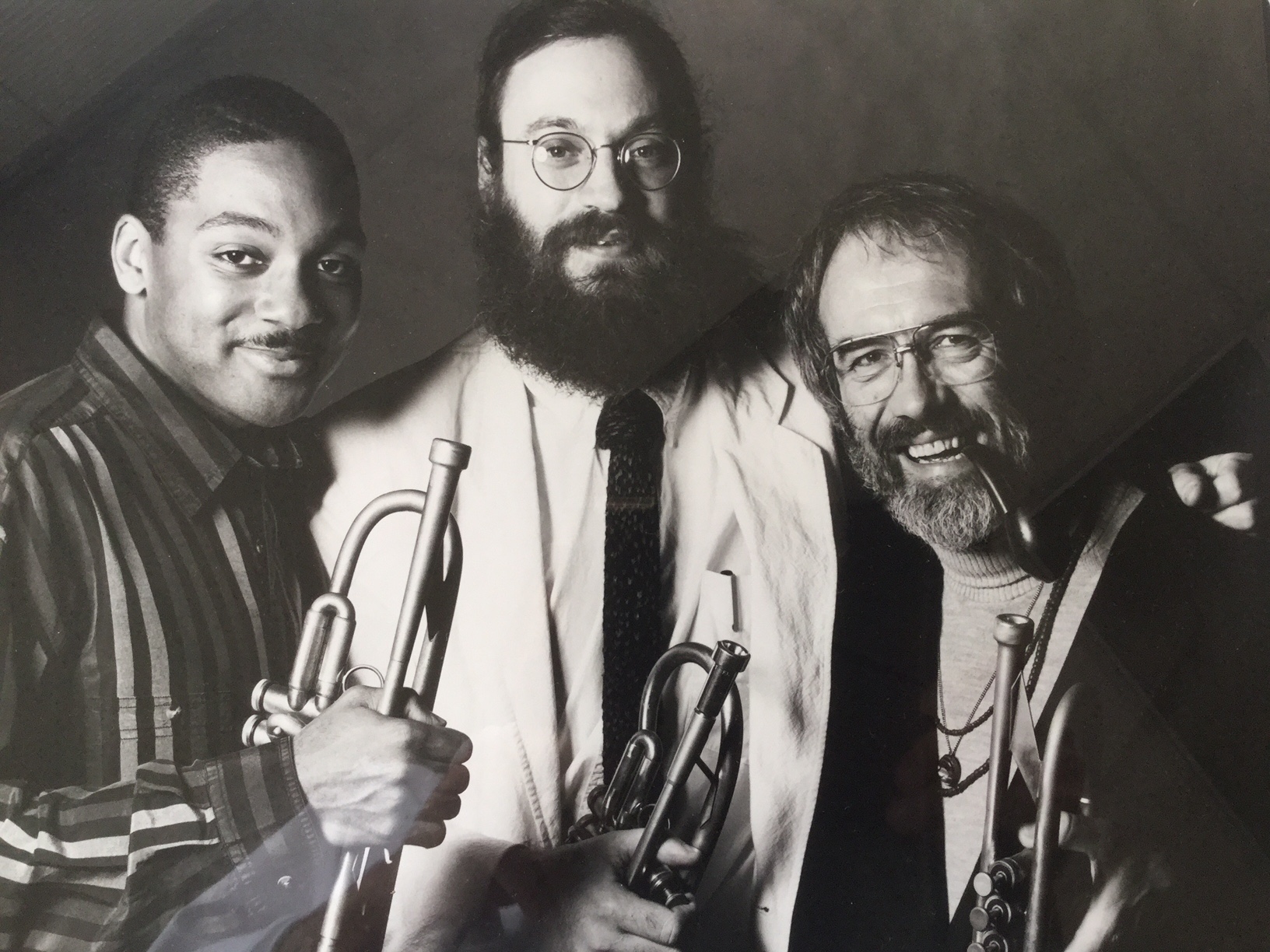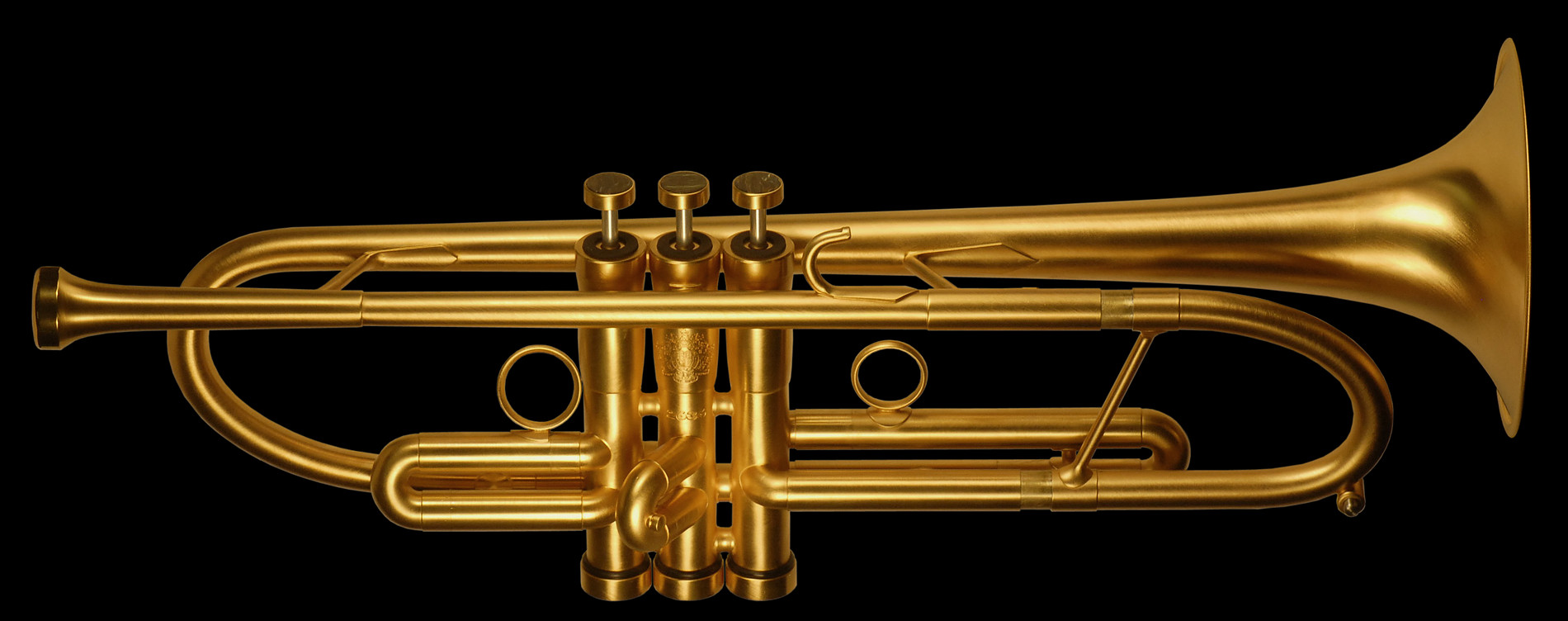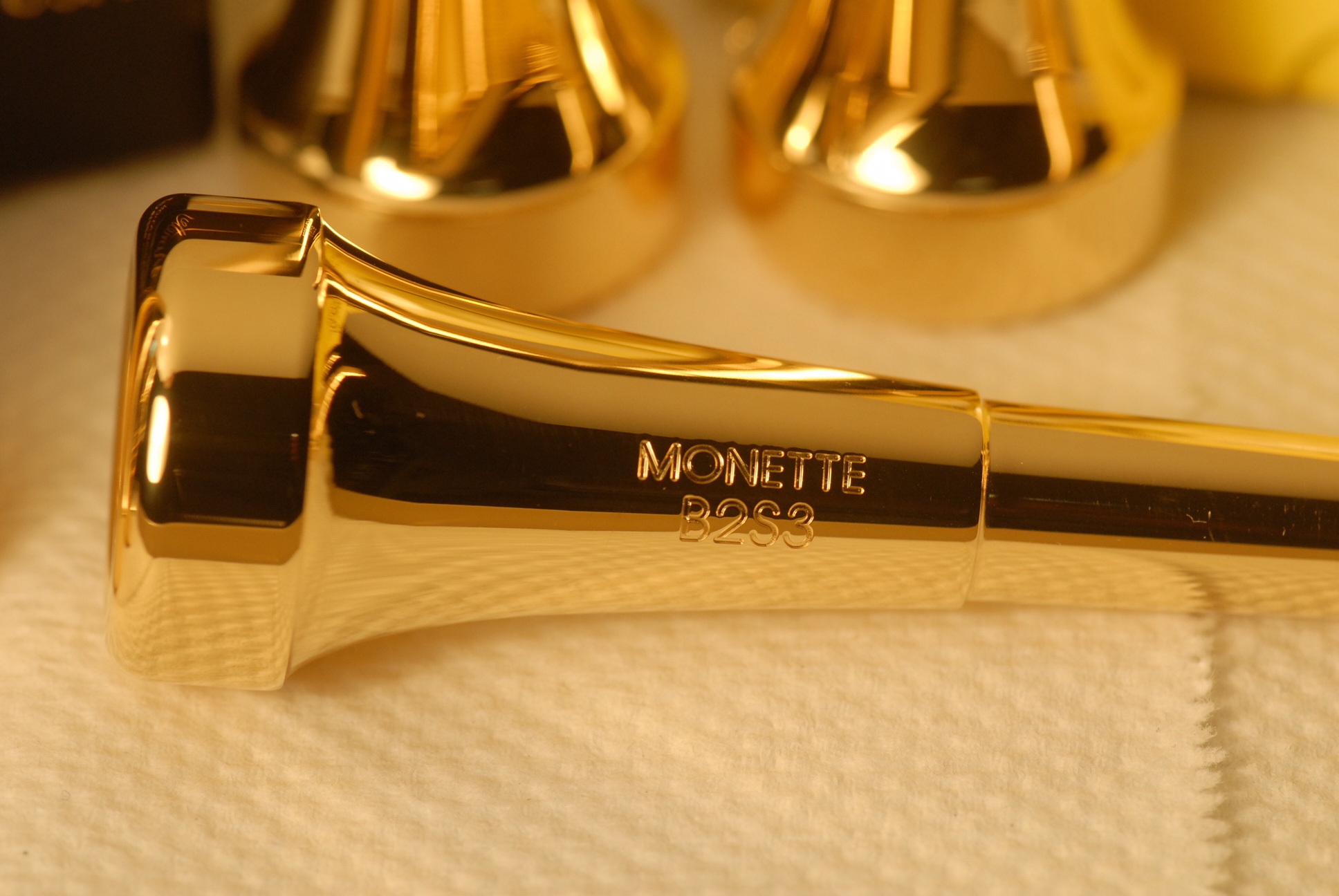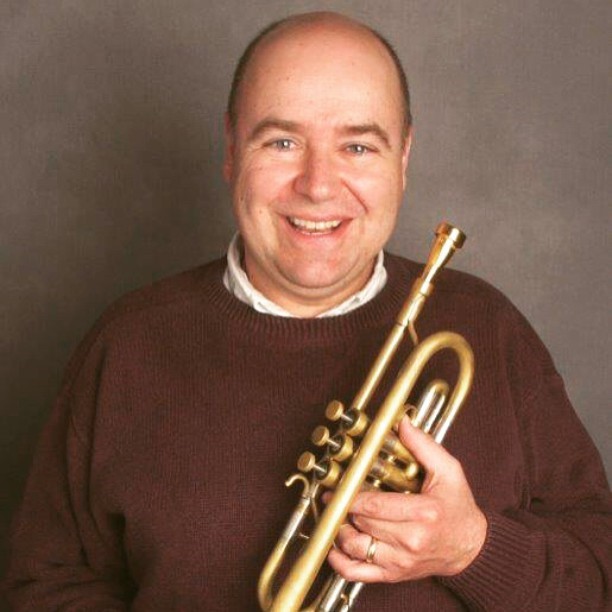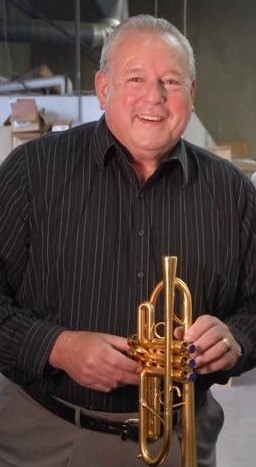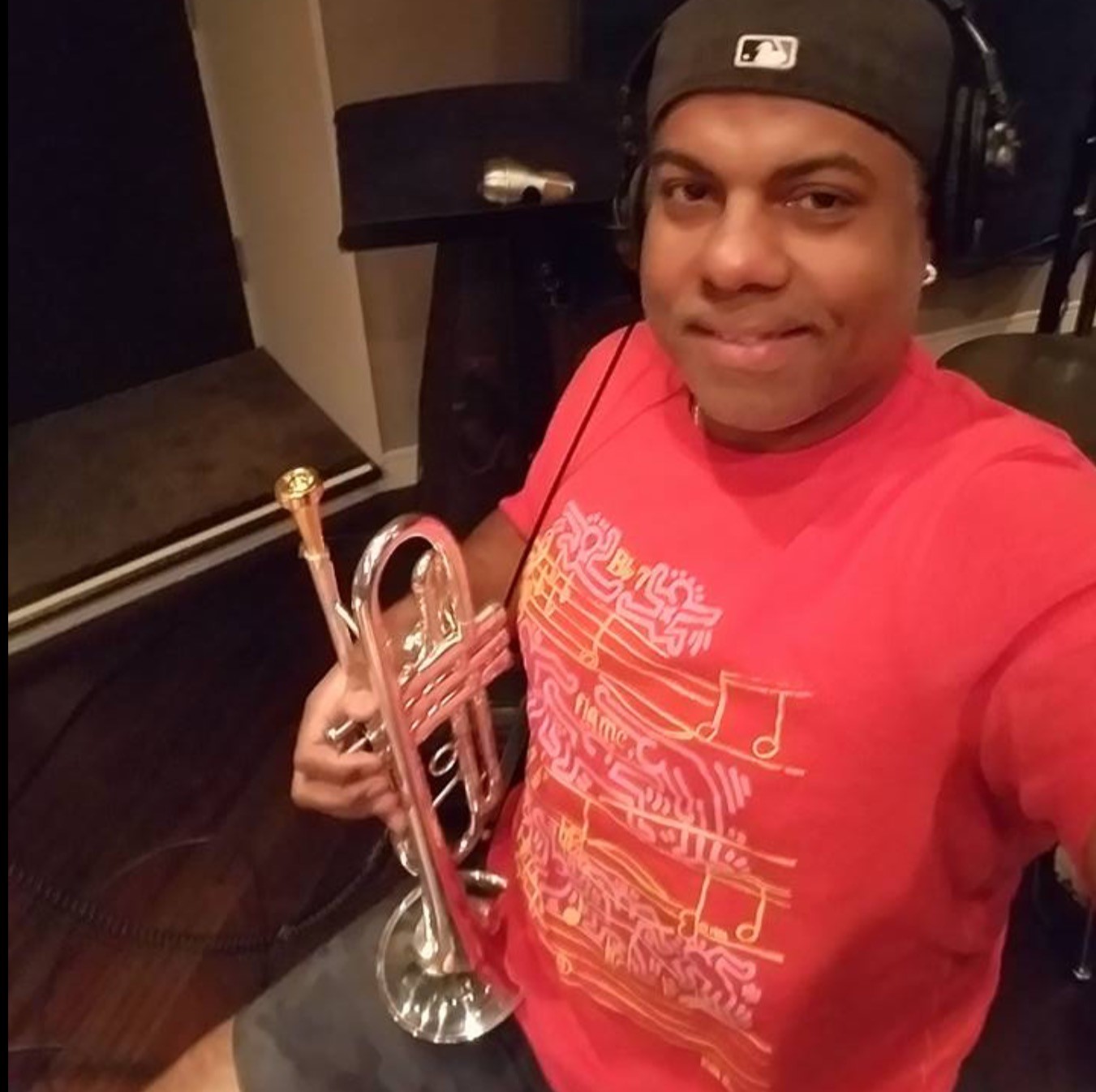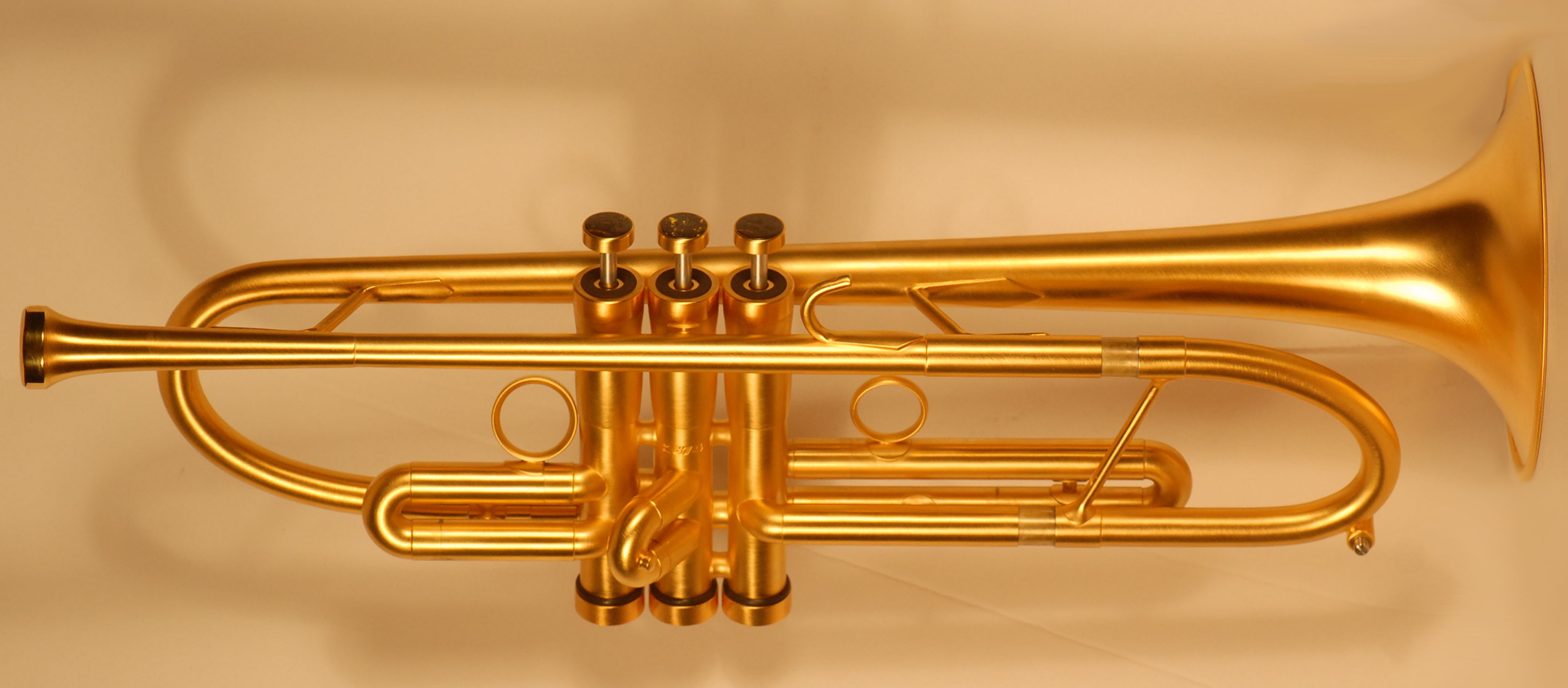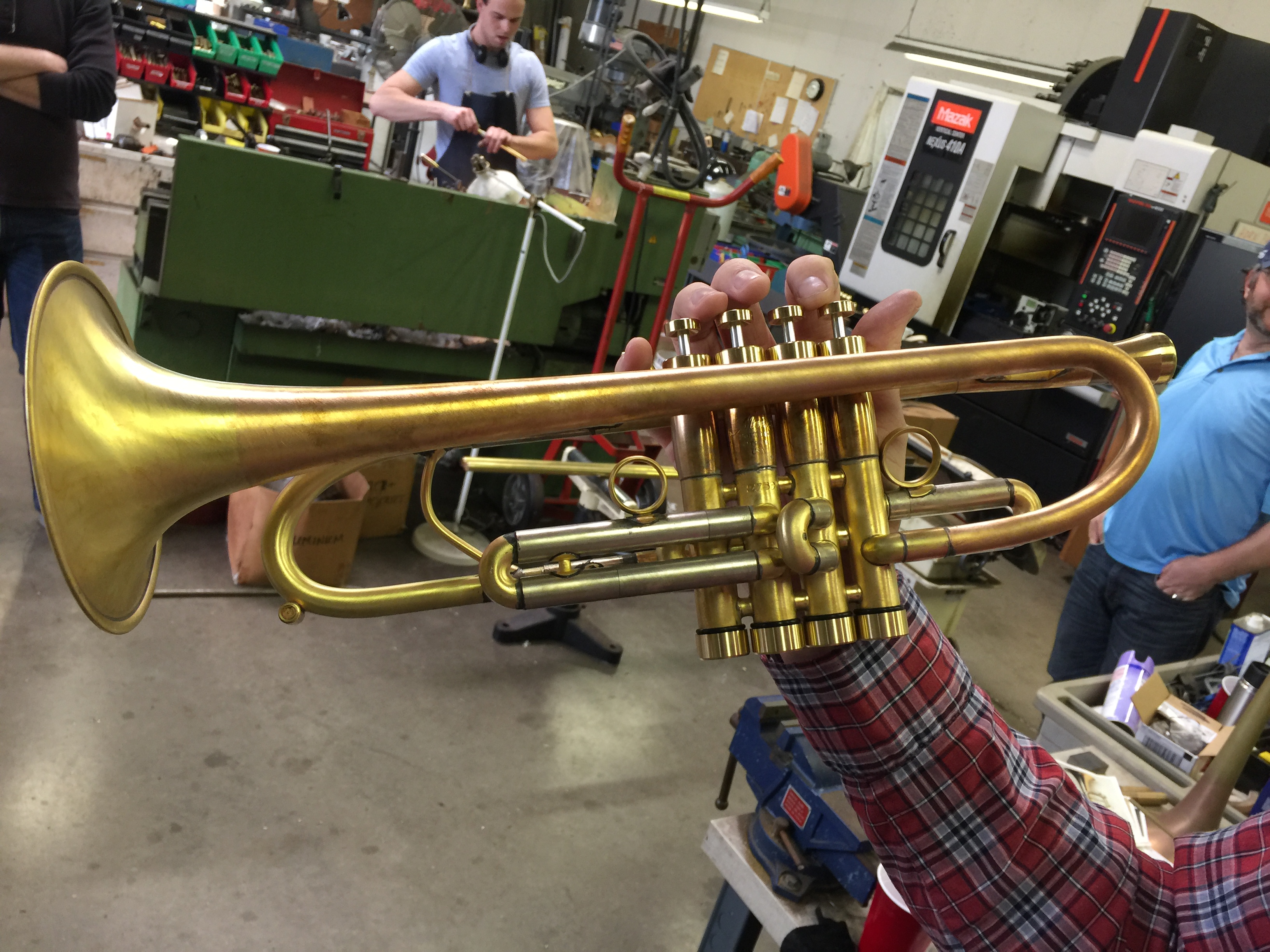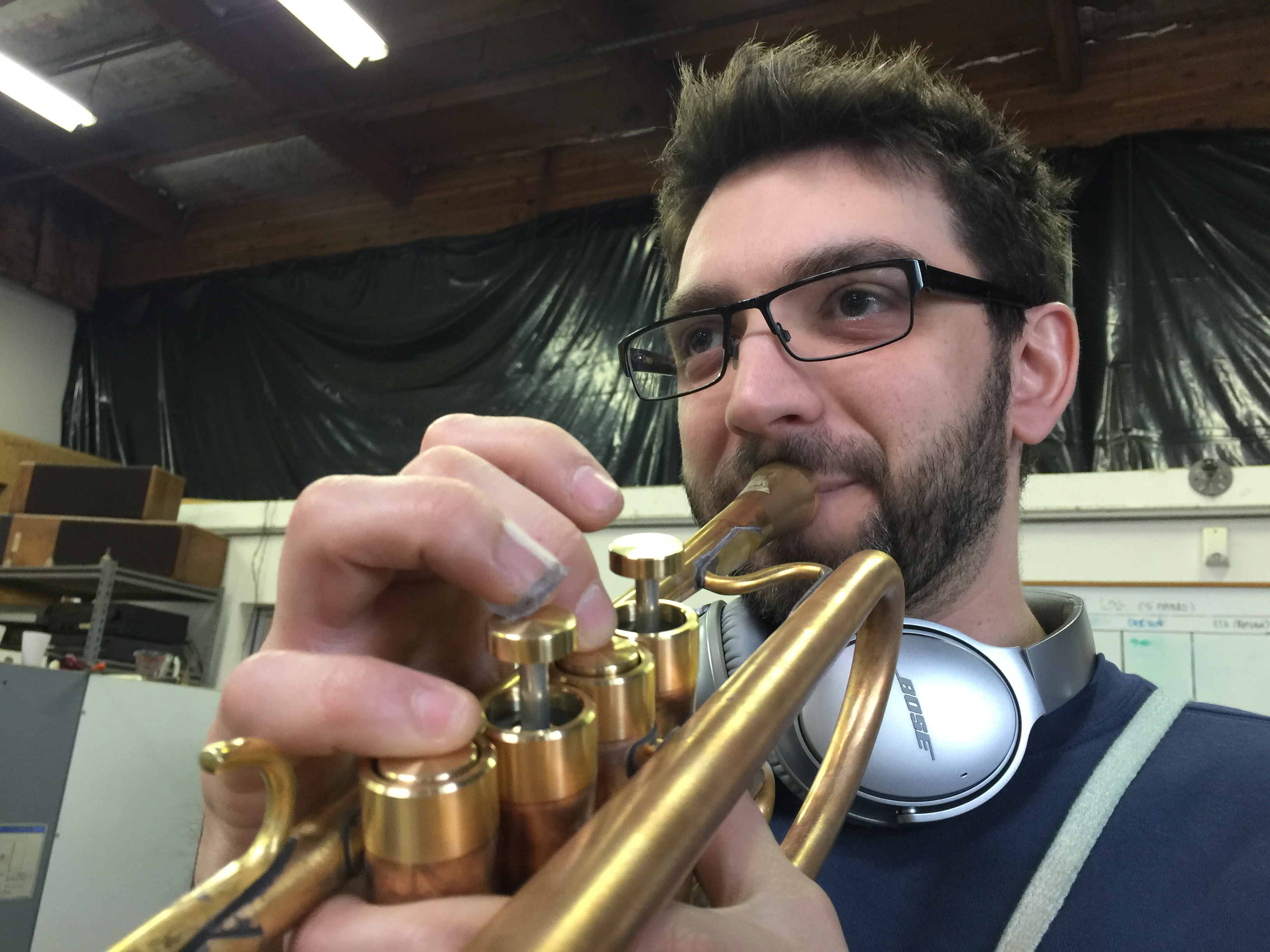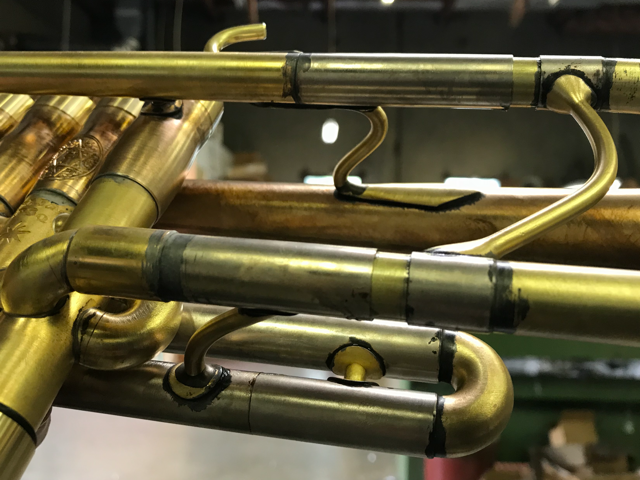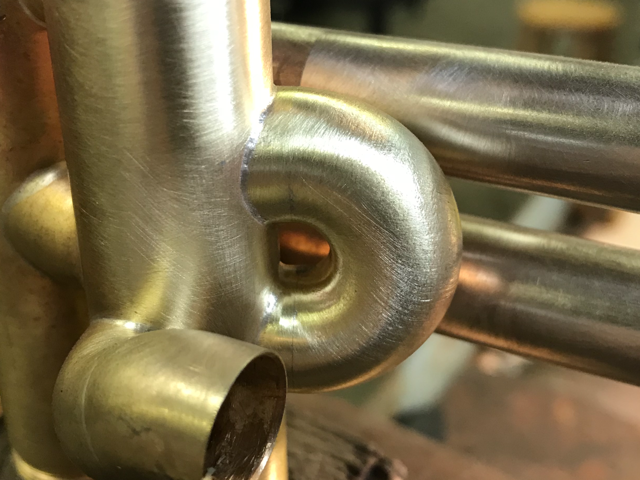If you use Monette mouthpieces with the same physical approach and sound concept that you are used to with your old mouthpiece, you will be working too hard to obtain optimum results. The following tips are based on our experience with thousands of players. They will help you make the transition quickly and easily to a more efficient, resonant approach to playing.
1. High on the Pitch
After years of working with many great artists, part-time performers, and amateur players from all over the world, it is not an exaggeration to say that probably 99 out of every 100 players we meet play high on the pitch. This is not the fault of the players, but rather a result of what we have all had to learn physically in our body use to compensate for the inconsistencies inherent in conventional equipment. Playing with this extra tension in the body negates most of the advantages our mouthpieces offer.
Virtually every player we meet plays to some degree with his or her head in front of their spine rather than over their spine. Most also play with their heads tilted up, compressing the back of the necks. Both of these practices block the throat, and cause the player to play high on the pitch. Here are some tips for overcoming these habitual patterns of body use:
Practice keeping the head over the spine while bringing the instrument and mouthpiece up to your lips to play. Use a mirror or have a friend video you in profile as you start to play. When you bring the equipment to you, you control it! When you bring your head forward to meet it, it controls you and you block your throat in the process!Try lowering the bell of the horn a few inches as you play, while maintaining the same embouchure and angle between the instrument and face. This will extend the back of the neck and help open the throat. Notice the difference in pitch and how much one needs to adjust the position of the tuning slide when playing with the neck extended and the throat open in this way. Notice that the upper register will improve immediately.Keep the elbows out away from the ribs to help keep the chest open, and keep the shoulders down and broad while playing, resisting the memory of raising them when playing onto the upper register. Many players raise the shoulders automatically as they bring the instrument up to play.Keeping the feet parallel when playing will help keep the hips open and help one to use the entire body while playing. This will help keep one “on center” and will improve every aspect of performance.
![]()
2. Lower = Higher
On a conventional mouthpiece, one must play “tight” in the upper register to play in tune. This is because the open upper register on your old equipment is flat (low pitch center), forcing you to compensate. With a Monette mouthpiece, playing “tight” in the upper register will actually make the upper register sound flat! Concentrate on staying open and staying “neutral” as you play into the upper register. Playing down on the “center” of the pitch allows a more effortless, in-tune upper register.
Try playing a C in the staff as centered, aligned, and relaxed as possible, and check pitch with a tuning fork or other mechanical means. When tuned to a known source, play into the upper register for a few moments, and then return to the C in the staff. If this original C is now above where it was before, you have been playing too tight in the upper register.To help correct this common problem, try to make sure you are as aligned and open as possible when you start playing, and then practice playing all through the register of the instrument without changing how you use your body. The more open and consistent you are in your physical approach, the closer you will be to being in tune with your starting pitch after playing for extended periods.
![]()
3. Push In Your Tuning Slide
When using Monette mouthpieces, most players will need to push their tuning slides in more than they are accustomed to if they want to really play down into the “center” of their equipment. Playing down to the center of the pitch allows an easier, more relaxed approach to playing—the key to enjoying our mouthpieces. Pushing in the tuning slide is simply a mechanical compensation in the instrument for the lower, centered, and corrected pitch center in the body of a properly aligned and relatively open player.
If you find that you have to pull your tuning slide out more and more as you play for extended periods of time, try using less pressure and effort in your physical approach to playing, or try a larger mouthpiece! The exercises on checking pitch before and after playing in the upper register (mentioned in #2 above) are a great way to “check in” to see how swollen or how tight one has become while playing.Notice that there is a “sweet spot” for your tuning slide that will provide the best sound, response, and intonation on a given instrument. If your tuning slide is out too far, the instrument will feel lethargic and sound dead—with “slots” that are too large for easy flexibility. If your tuning slide is in too far, the instrument will feel unstable and sound too bright, with slots that are too small to provide a full sound or a comfortable, stable response. Monette instruments are each custom-made for the exact pitch (440, 441, 442, etc.) the player requests, as well as for the exact mouthpiece size the player most commonly uses.
![]()
4. Use Your Valve Slides
Using your first and third valve slides will dramatically improve your consistency of performance. If you do not use your slides to properly adjust the length of your instrument when you have more than one valve depressed or when using just intonation, you will have to make physical adjustments in your body in order to play in tune. This adversely affects sound, intonation, and endurance.
Modern brass instruments have valve slides that are (one hopes) the correct length to change the length of the instrument the right amount to lower the pitch by an interval that is in-tune to the open instrument. The common exception to this rule is the third valve slide, because it is almost always used in combination with another valve. On a Bb trumpet, depressing the second valve lowers the pitch of the instrument by a half step to A. The first valve slide, which is the correct length for a Bb trumpet, is now too short. This is why the first valve slide must be extended to play any notes played with the 1-2 combination in tune. It follows that the third valve slide needs to be extended to play any 1-2-3 combination notes in tune. With the 1-2 combination depressed, the Bb trumpet is now a G trumpet, which requires a third slide length equal to that of an instrument pitched in G in order to sound in-tune.To master the use of moveable valve slides in a musical way, start by playing slow scales or easy, slow musical lines, while consciously trying not to adjust your body for notes that are out of tune that are played with more than one valve depressed. Then when you are familiar with the intonation pattern for a given scale or tune, practice using your slides to correct the intonation problems as you play. Increase speed to improve technique, and learn your limitations so that you know when you are playing too fast to make adjustment practical.
5. Take a Full, Relaxed Breath
Air is the fuel brass players use to make music. The more efficient, open, and complete you breathe, the more complete your sound will be and the less you will have to work when playing.
One of the easiest ways to better utilize your lung capacity and breath easier is to simply align your body, thus eliminating most of the tension that constricts the breath. One of the best trumpet lessons for using Monette equipment effectively is a beginning Hatha Yoga class usually costing between $5 and $10. The science of Yoga is a more than 3,000-year-old practice of making your body more aligned and resonant, a major key to improved performance in any field. Ask for “Mountain Pose” or “Corpse Pose” for starters, and don’t be shy about asking for one-on-one help. This practice will immediately help to make your breath more effortless and complete.Charles Schlueter has said many times that there is an inverse relationship between the amount of air used when playing and the amount of effort needed to effectively make music. More air = less work, and less air = more work!
![]()
6. Look Out Into the Room as You Play
Making music is all about intimacy, communication, and connection. By looking away from yourself while you play (rather than at your valves or your music stand) your visual attention will help shift your aural attention out to your audience—even if your audience is an empty room or just yourself! This will automatically open up your physical approach and help you play on the true pitch center of your equipment.
We strongly discourage the use of music stands when players visit our shop to try Monette equipment for the first time, since focusing visually up close will almost universally force them to play “above center.” Having said this, please do not write to us complaining that we discourage playing from music! We are simply suggesting a way for players new to Monette equipment to more easily realize a different sound placement— not trying to negate the value of reading music!
![]()
7. Play in Large Rooms
For most players, the larger the room you play in, the more comfortable you will be about opening up and playing on the center of the pitch. If you can’t hear it, you can’t play it. Small or “dead” rooms encourage small, “dead” sounds. Give yourself the gift of playing in an auditorium, church, or other room designed for musical communication as often as possible.
When you are playing in a large room with good acoustics, look out into the room, and especially listen for your sound as it collects and bounces around the far corners of the room. Then ask a friend to listen to you while standing just in front of your bell. Then have the listener slowly walk backwards away from you while you continue to play. In most cases, the most resonant, complete sound will be heard after your listener has moved a certain distance away from you. Keep your concentration at least this distance in the future in order to better connect with your audience, wherever they are.
We have performed this test many times at our shop with many people. The lightest Monette instruments usually start to sound “good” at about 5-8 feet. Our SAMADHI instruments usually start to sound “good” at about 70-80 feet! For more information about the relationship between frequency, wave-length, and projection, please refer to the section on Sound Concept and Resonance, or refer to any physics book.
8. Think Music
Playing from the right side of your brain (the creative, rather than the analytical side) will help tremendously. This is most easily done by simply concentrating on making beautiful music and on producing a lovely sound. This is absolutely the fastest way to acclimate to the corrected pitch center of our mouthpieces. For many players, “play-testing” and constantly analyzing (left brain) the pitch and sound of individual notes results in tightness, defeating the purpose of using our equipment.
Try tapping your left foot while you play. This helps activate the right brain, which in turn helps you to let go of physical habits and concentrate more on the music. Also, try playing something that you know from memory rather than playing with music in front of you, and notice the difference in sound placement.
![]()
9. Know the Sound You Want
Knowing the sound you want to produce is the first step to producing it. Listen to players you admire, and emulate their sound. If you do not have many recordings that inspire you, ask friends or a local brass teacher for recommendations. If you would like suggestions for recordings that demonstrate the best use of Monette equipment, please contact us, and we will be happy to provide a partial listing of recent recordings.
Most players can relate at least one experience when they heard some musician that changed their whole approach to listening to and/or making music. Treat yourself to as many concerts as possible, and do not be shy about asking some great player you admire for a lesson. Travel to hear your favorite music. Sometimes one lesson or concert can provide the inspiration of a lifetime.
10. Tune with Your Ear
Electronic tuners register timbre and volume as well as pitch, and in most cases cannot be relied upon. Tuning forks and other mechanical means along with using resultant tones when tuning with other players are the most reliable ways to check pitch.
Try using a tuning fork held up to your left ear, and then strike the fork again and hold it up to your right ear. Which pitch is correct? Most people will hear a different pitch on each side, when of course this is “impossible” since the tuning fork has a constant pitch. The difference in pitch is really a difference in timbre that is perceived as a different pitch. Most people have different thicknesses of bones in the inner ear from one side to the other, causing the difference in perceived pitch. This may explain why some people seem to be tone-deaf, or at least why some have more difficulties than others when tuning! Thanks to Tom Stevens for this tip.
11. Expect an Adjustment Period
If you feel disoriented because the “slots” of some notes are in different places than you are used to, you are on the right track. You are probably still correcting certain notes that no longer need correction, and/or are still playing above the center of the pitch. It is important that you allow each note to center where it feels the best rather than artificially manipulating the pitch center to the position your previous equipment required. It usually takes a certain adjustment period to let go of old habits. Breathe fully, play slowly, and concentrate on making music.
Get outside reinforcement for playing with less effort and with more resonance in both your sound and in your physical approach. Find a teacher or another player who uses Monette equipment, and get together for a lesson or to play duets.
![]()
12. Avoid Switching Back and Forth
We occasionally meet players who keep switching back and forth between conventional mouthpieces and Monette mouthpieces, and in the process they do not get much satisfaction out of either. They sometimes get caught between the advantages Monette equipment provides and the body use and sound concept that they lived with for years. Often, the more they switch back and forth, the more confused they become. This guide has been prepared to help players more consciously understand how to get the most out of our equipment, and then forget it! We strongly recommend picking one brand of mouthpiece and staying with it!
![]()
13. Get Into Your Body
One subject that comes up often with players we meet is how to be more “grounded” and “in your body” when playing. When Maynard Ferguson gives clinics, he often talks about leg and foot position, and how important this is to being centered and secure as you play. Practice looking at your feet, and consciously let yourself feel them before you begin to play. You have to be “in” your body in order to perform in your body most effectively. Improving the alignment of the hips and feet will dramatically help any player immediately to be more centered and focused.
14. Use Cross Training
A study of efficient body use and breathing and how they affect performance is always helpful in playing more efficiently. Many players we know practice Yoga, Tai Chi, or other physical/meditative disciplines. Students of the Alexander Technique often experience very positive improvements in their playing. (Our friend John Henes, Alexander Technique teacher at Northwestern University, has given more formal clinics at our Portland shop than Dave Monette has!)
Get outside reinforcement for playing with less effort and with more resonance in both your sound and in your physical approach. Find a teacher or another player who uses Monette equipment, and get together for a lesson or to play duets.

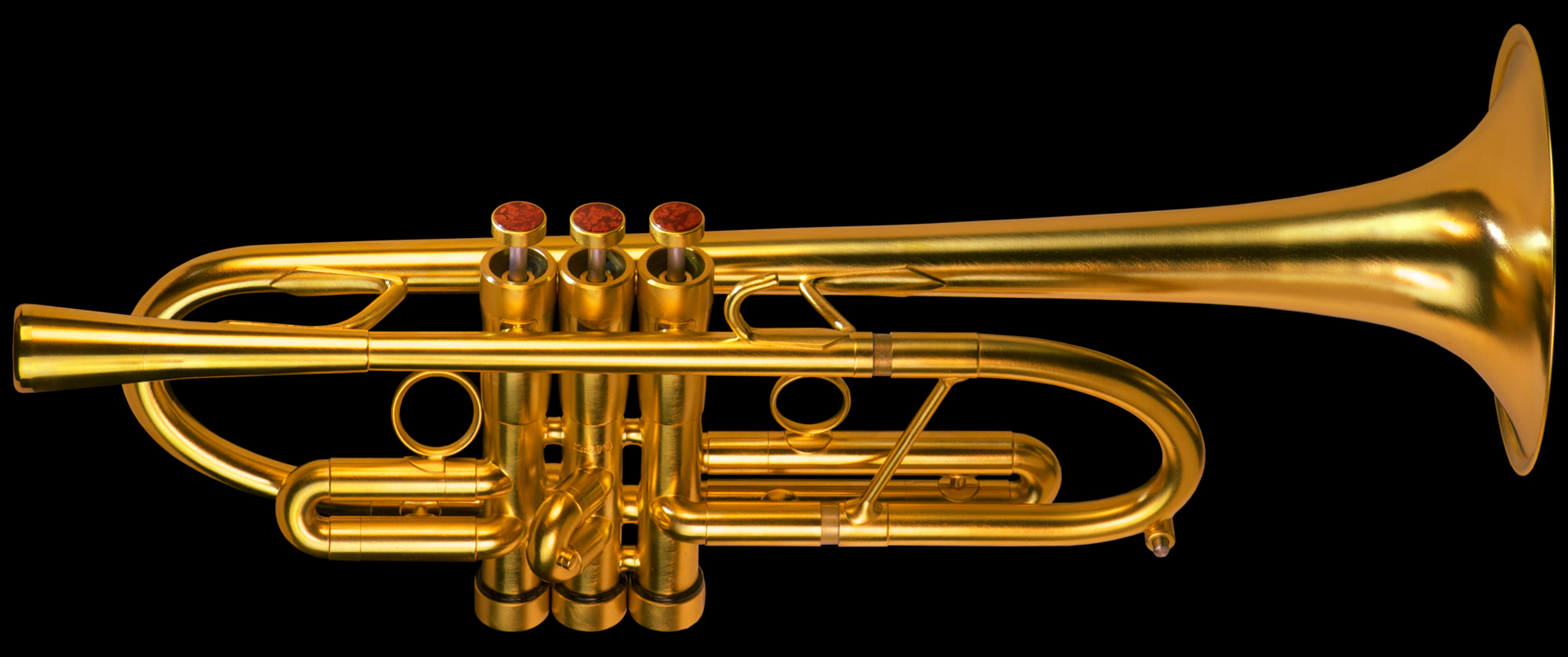
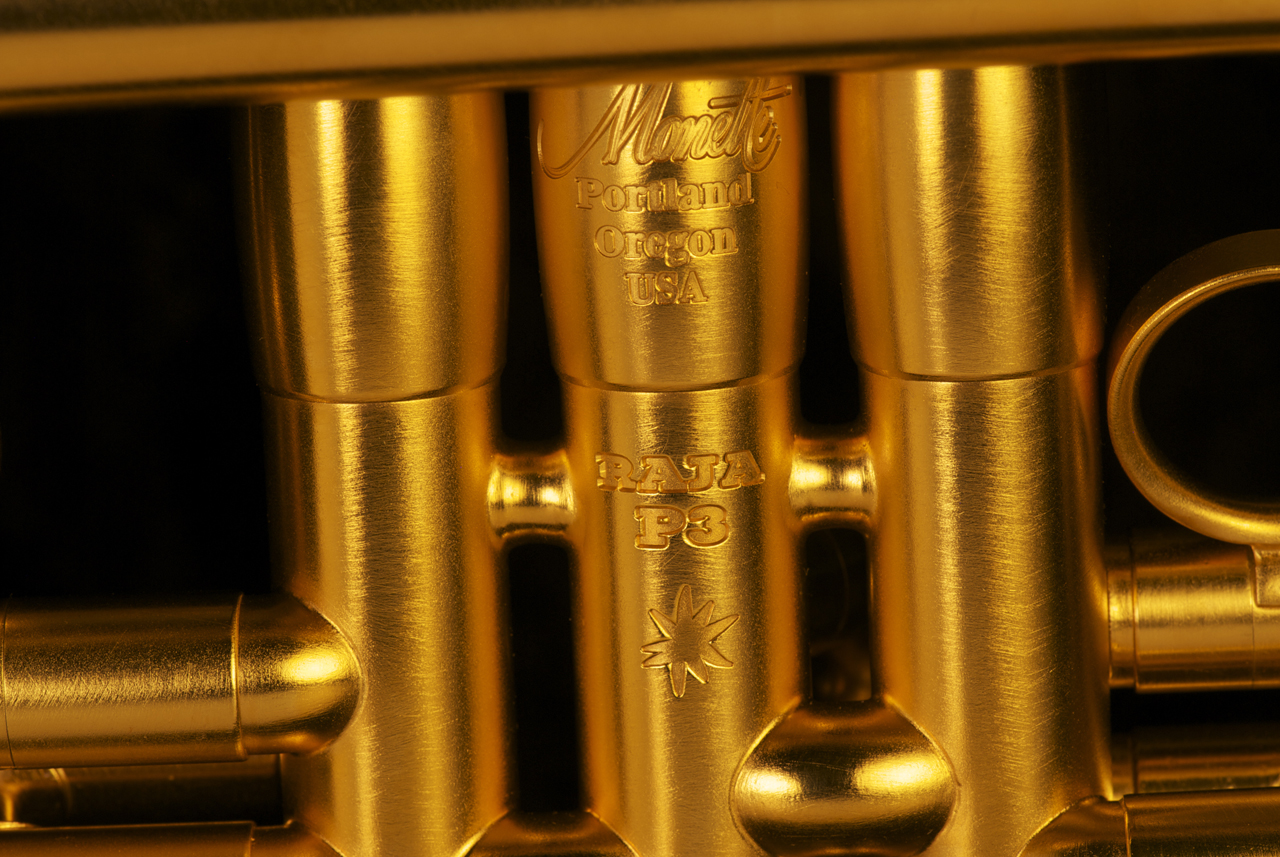





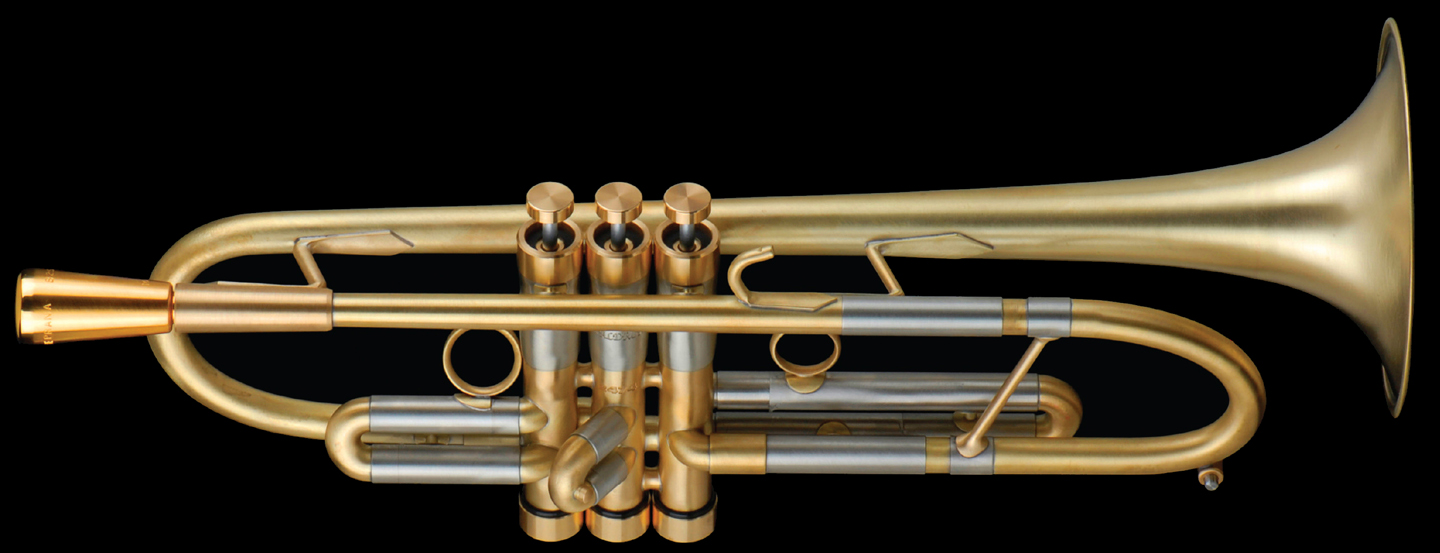
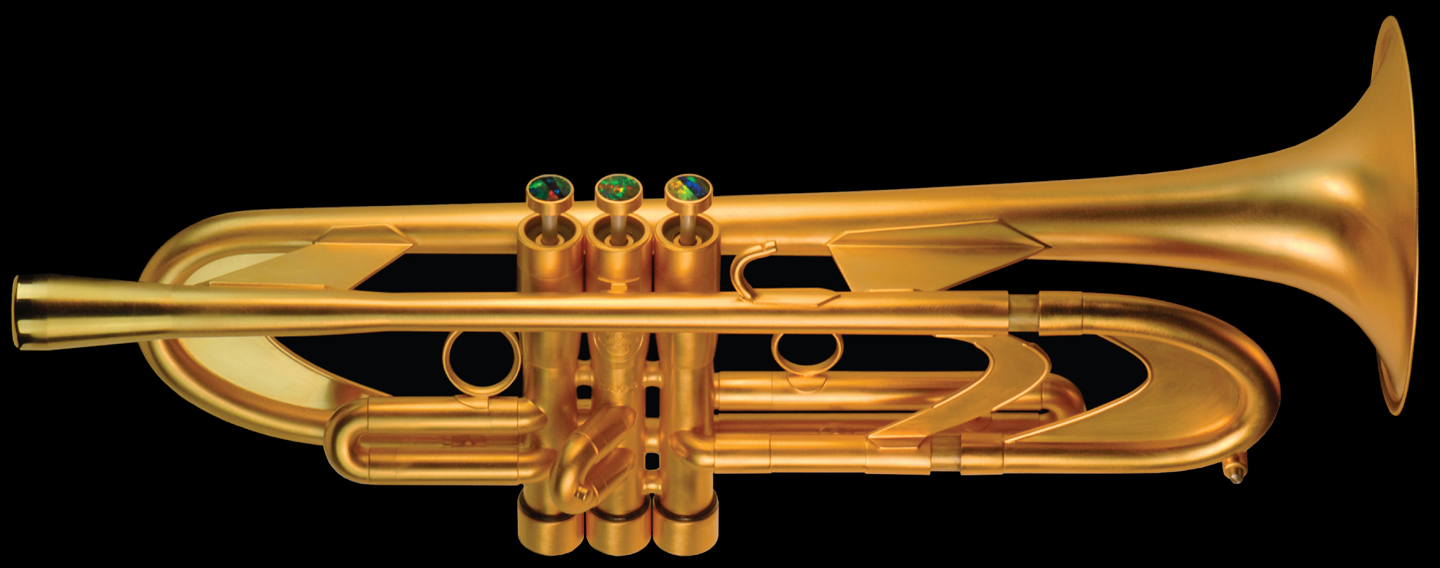
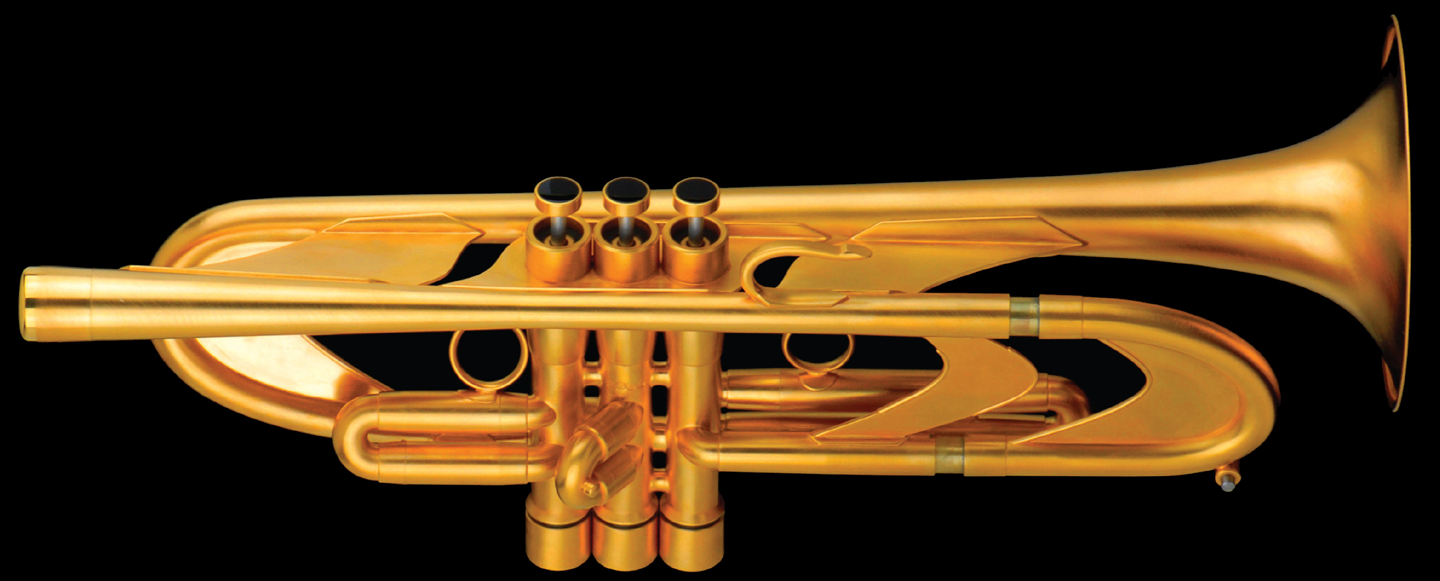

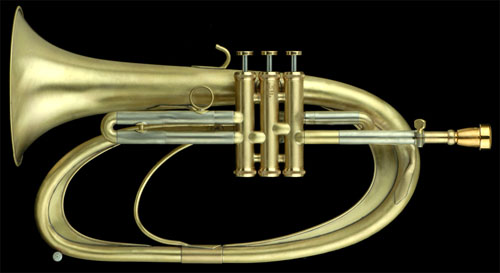

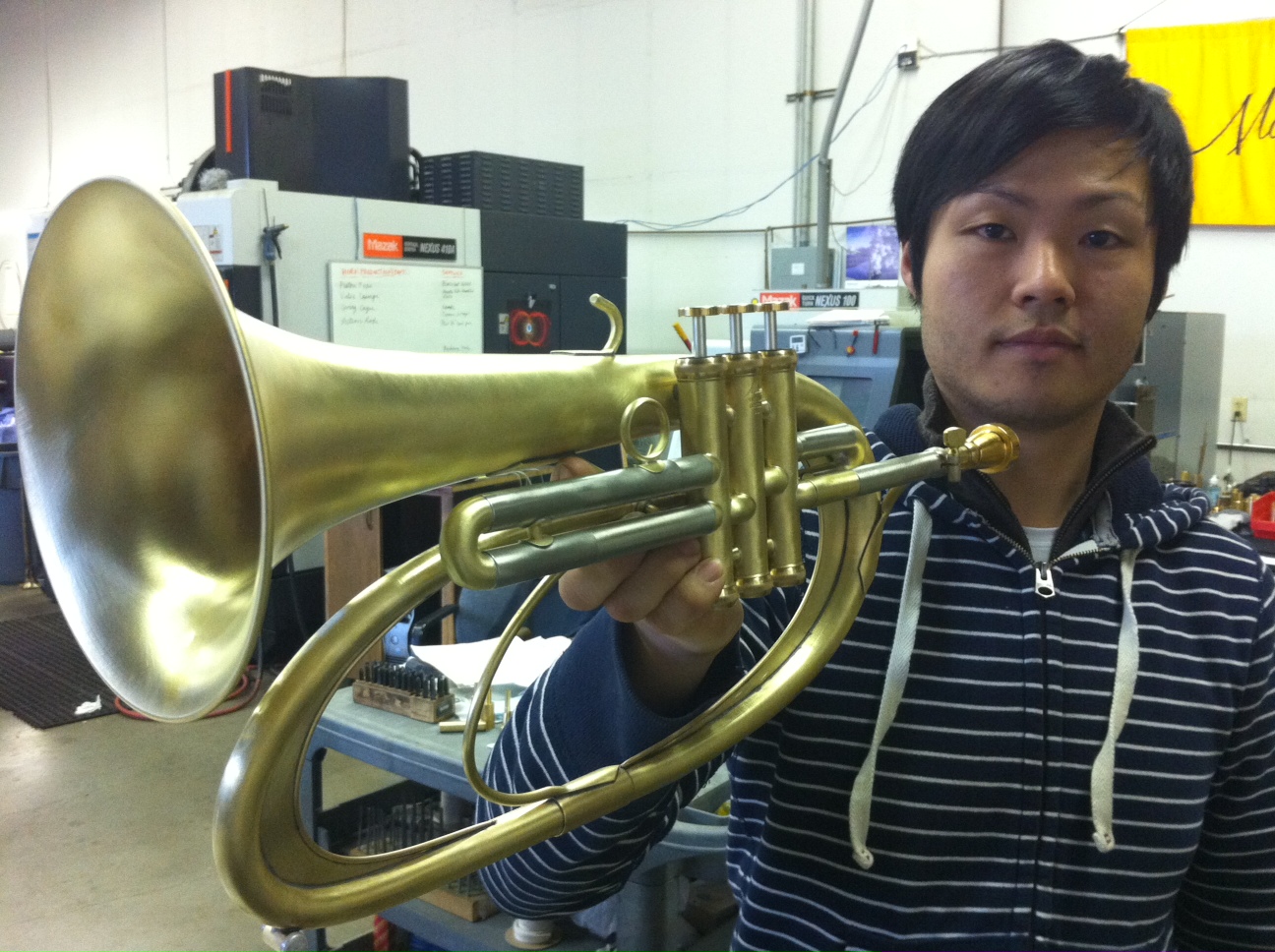
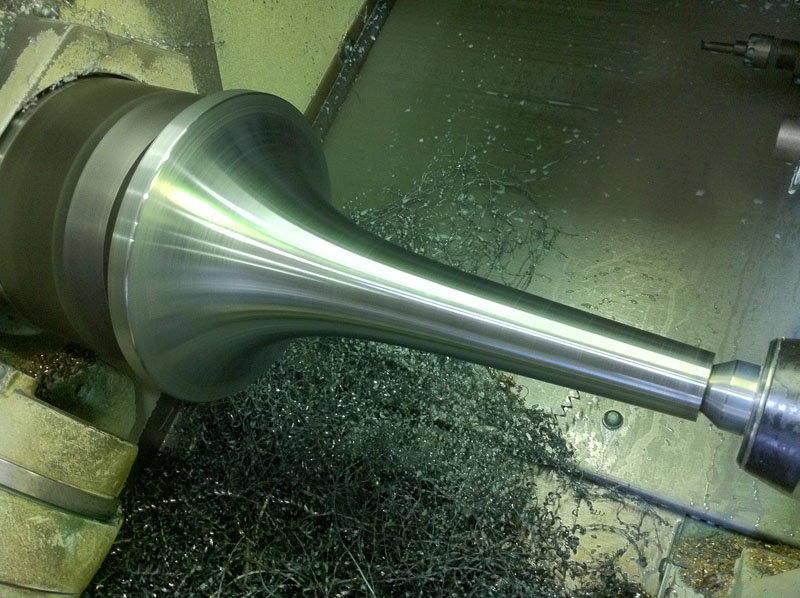


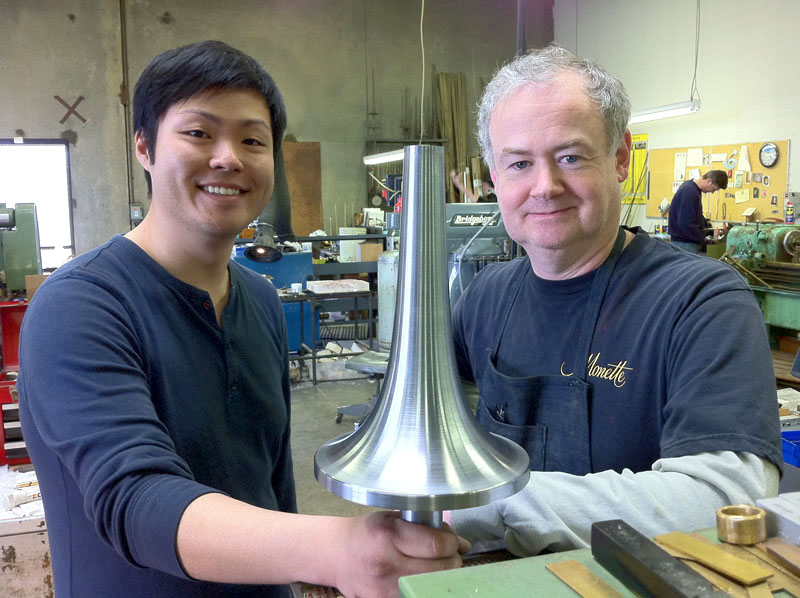
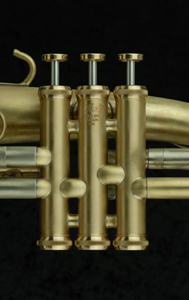
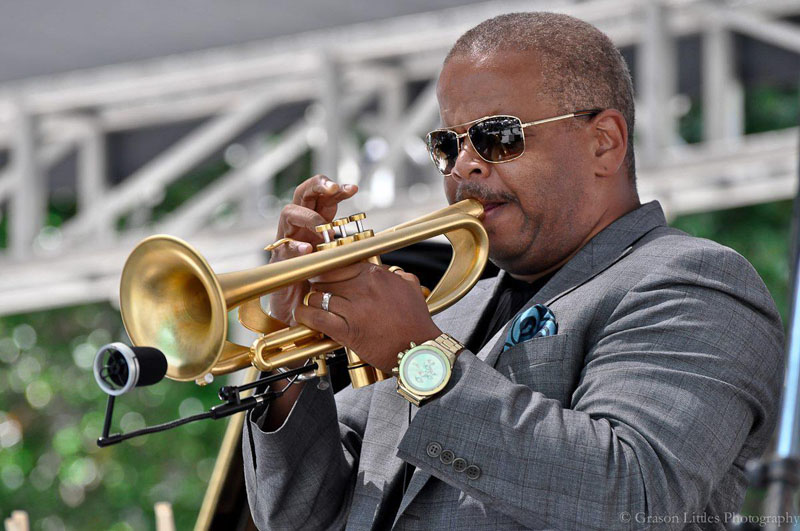





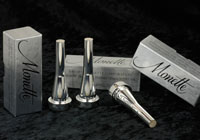 New Production Silver Mouthpieces - Now in 4 Sizes!
New Production Silver Mouthpieces - Now in 4 Sizes!